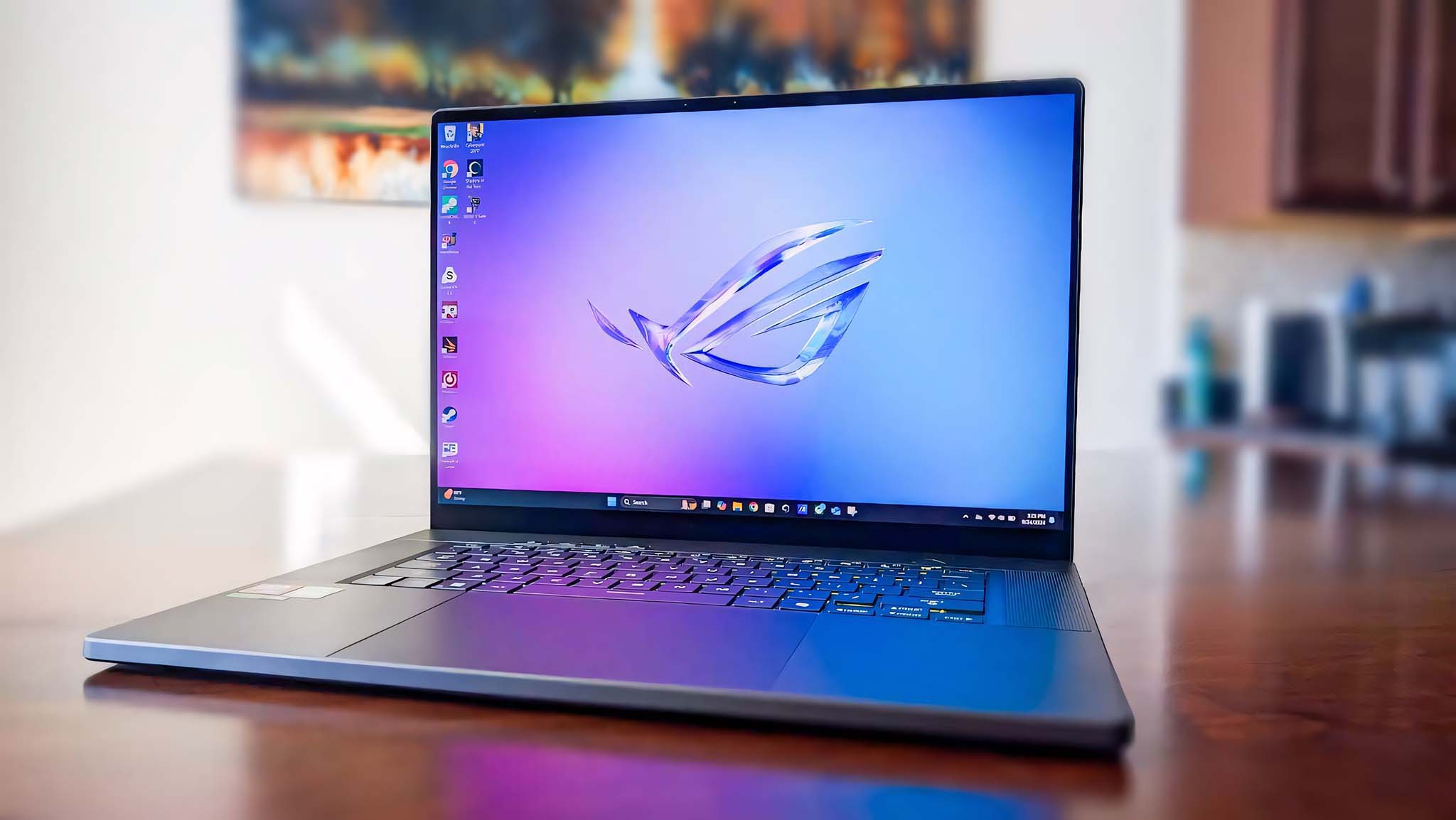
1. Pricing & specs
2. Design & build
3. Software & lighting
4. Display
5. Performance
6. Battery life
7. Keyboard & touchpad
8. Camera, mic, & audio
9. Competition
10. Scorecard
11. Should you buy it?
Earlier this year, I did our ASUS ROG Zephyrus G16 (2024) GU605 review and found that this is a great gaming laptop with its Intel Core Ultra AI processor. ASUS has also released an AMD Ryzen AI 9HX version of this same laptop and given it the same name aside from the GA605 model number at the end. I've been curious to see how this AMD laptop model compares to the Intel model, so over the course of the last two weeks, I've spent time playing video games, running various benchmark tests, and using this laptop for work.
So, how does this AMD model compare to the Intel model? And is it worth buying? Let's dive in and discuss this laptop's performance and features.
ASUS Zephyrus G16 (2024): Price and specs
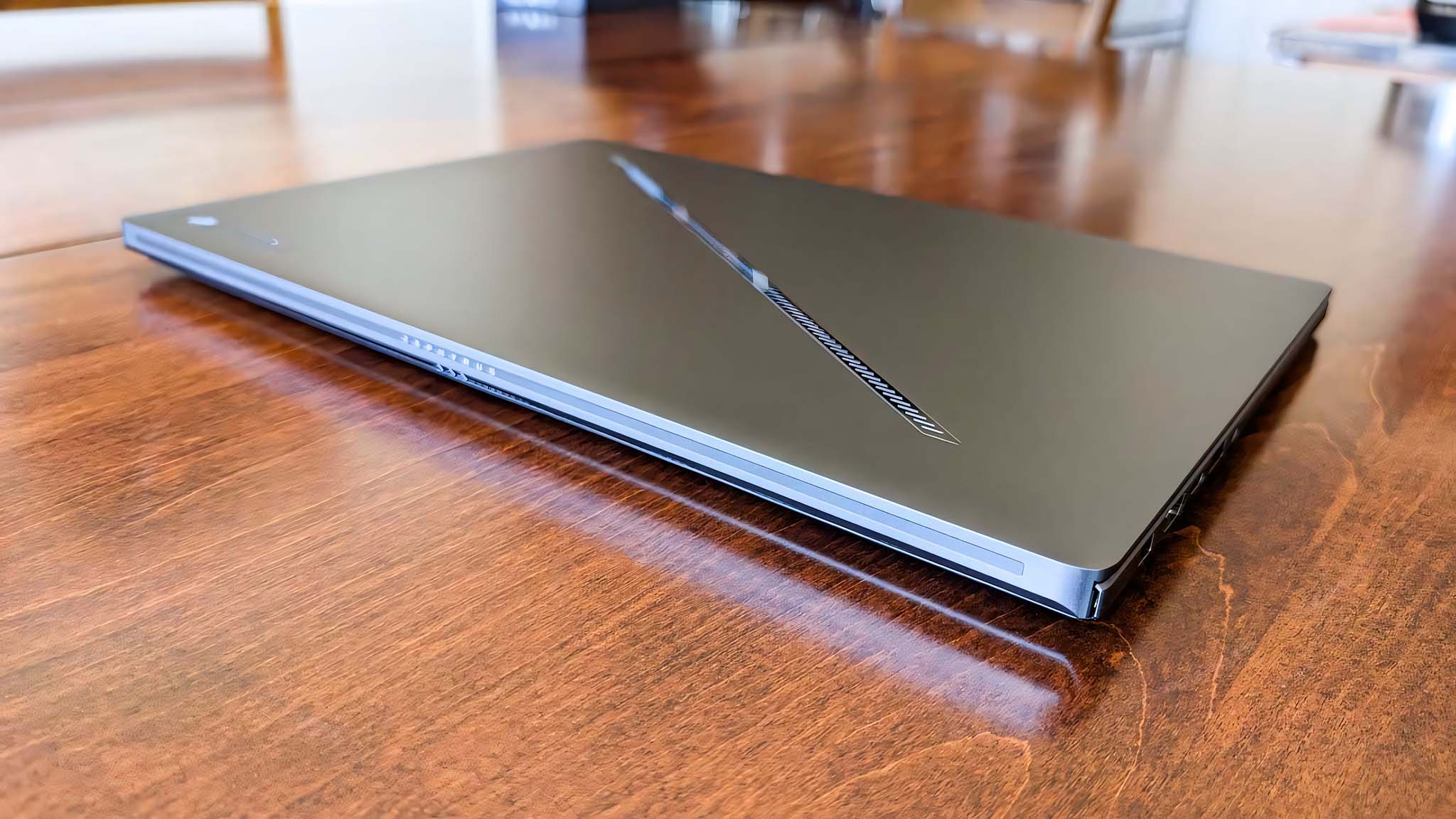
Pricing & specifications highlights
- As usual with mid-to-high-tier gaming laptops, this model is relatively pricey, especially when you choose one of the higher-tier configurations. It has a starting price of $1,899.99 and goes up from there.
- The specific configuration I reviewed has a $2,299.99 MSRP.
- There are fewer configuration options with the AMD model than there are with the Intel model.
- Price rating: 3.5/5
Price: $1,899.99 (starting at) | $2,299.99 (reviewed at)
OS: Windows 11 Home
CPU: AMD Ryzen AI 9 HX 370
GPU: RTX 4060 L | RTX 4070 L (reviewed at)
NPU: AMD XDNA (up to 50TOPS)
RAM: 8GB | 16GB | 32GB
Storage: 1TB | 2TB PCIe 4.0 NVMe M.2 SSD
Display: 16-inch 2.5K (2560 x 1600), WQXGA, HDR, 16:10, 240Hz, 0.2ms
Battery: Up to 4 Hrs 27 Mins
Ports: 1x USB-C 3.2 Gen 2, 1x USB4, 2x USB-A 3.2 Gen 2, 1x HDMI 2.1 FRL, 1x SD Card reader, 1x 3.5mm headphone jack
Size: 35.4 (W) x 24.6 (D) x 1.49 ~ 1.64cm (H) (13.94 x 9.69 x 0.59 ~ 0.65 in)
Starting Weight: 4.08 pounds (1.85 Kg)
The ASUS Zephyrus G16 (2024) GA605 is a mid-range gaming laptop. Your only choice for the central processing unit (CPU) is the AMD Ryzen AI 9 HX 370, an AI-boosted processor with a neural processing unit (NPU) in it. If you're curious to learn more about these kinds of processors, you can check out our AI PC guide or our NPU guide.
When it comes to the graphics processing unit (GPU), you get the choice between the NVIDIA RTX 4060 L or the more powerful RTX 4070 L, which aren't the most powerful options on the market but great overall. In terms of memory, there are three options: 8GB, 16GB, and 32GB. If you plan to play a lot of graphically demanding games, then going higher with memory should help the laptop run more smoothly. Meanwhile, you can choose between going with either a 1TB or a 2TB SSD. Unless you play games non-stop and need to keep those files saved locally, then the 1TB should be a good fit for most people.
It's worth noting that the Intel GU605 model of the Zephyrus G16 offers more RTX 40-Series GPUs to choose from. Where the AMD GA605 model only offers as high as RTX 4070 L, the Intel model can have up to a far more powerful RTX 4090 L.
The Zephyrus G16 GA605 I specifically reviewed sells for $2,299.99 and features an RTX 4070 L, 32GB RAM, and 1TB SSD. ASUS ships to more than 110 countries around the world and many of its products can be found at major retailers like Best Buy, Walmart, and Amazon.
Recommended configuration
ASUS Zephyrus G16 (2024): Design and build
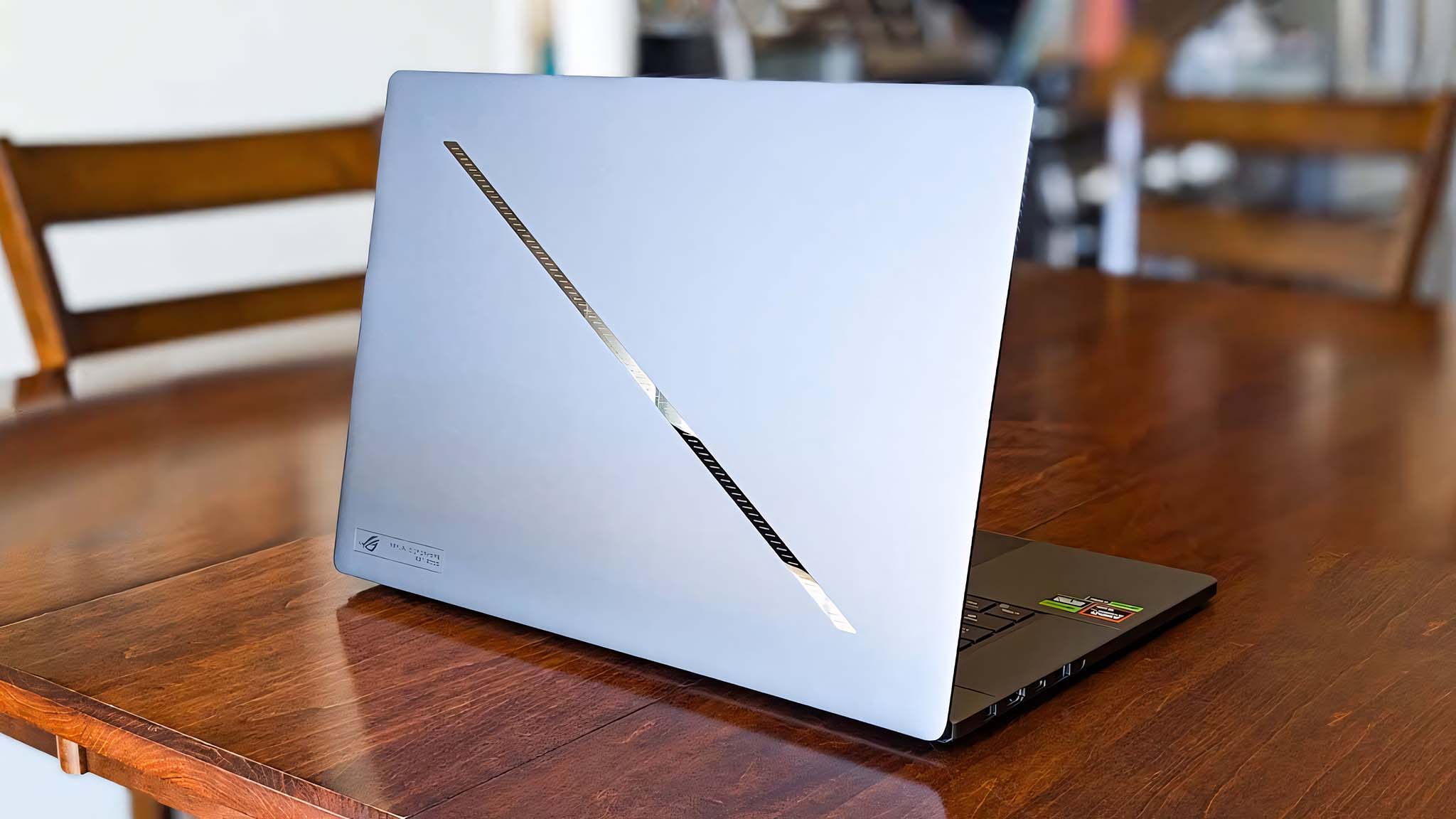
Build quality and design highlights
- While not the sleekest-looking gaming laptop on the market, the Zephyrus G16 (2024) GA605 looks nice overall and offers a sturdy build.
- There are a good number of USB ports and even a full SD reader, but it's missing an RJ45 port, which is odd for a gaming laptop.
- Fingerprints don't show up that much on the casing.
- Design rating: 4/5
Many gaming laptops have what are supposed to be edgy designs, but most of these RGB-drenched devices just look tacky. This is a way in which the Zephyrus G16 stands out... by not standing out. It has a more classy design that easily fits into a formal business setting. But if you prefer the edgy look of most gaming laptops, then this one might not be a good fit. It's not the sleekest shell I've seen, but it's sturdy and looks good overall.
The lid is relatively thin, yet it has white diagonal lighting on top, known as Slash lighting. I'll get into this Slash lighting more later in this review, but for now, suffice it to say that it both adds and distracts from the laptop's overall aesthetic. Meanwhile, the dark gray chassis is a very nice color, and the aluminum material does a relatively good job of hiding fingerprint smudges.
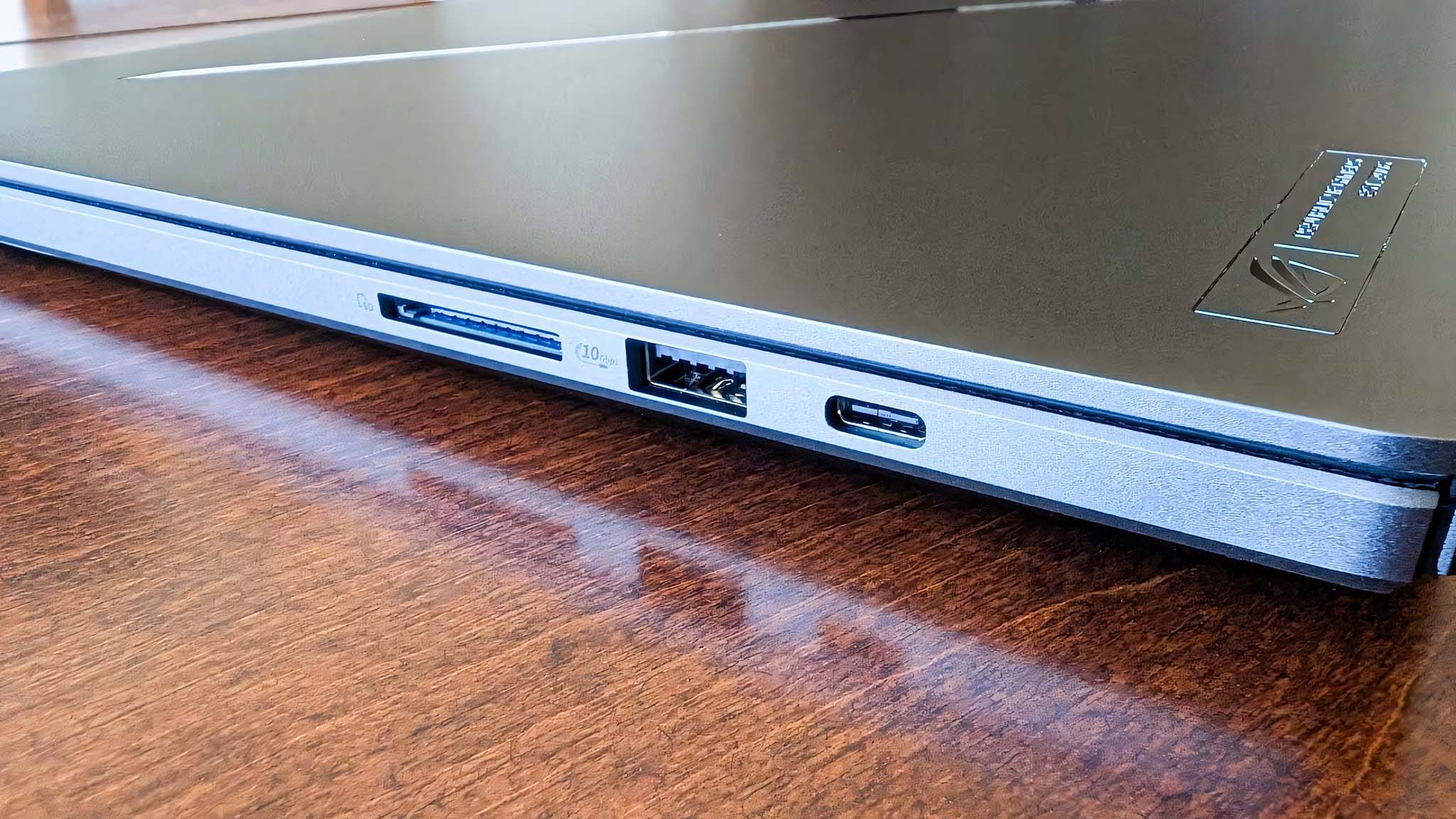
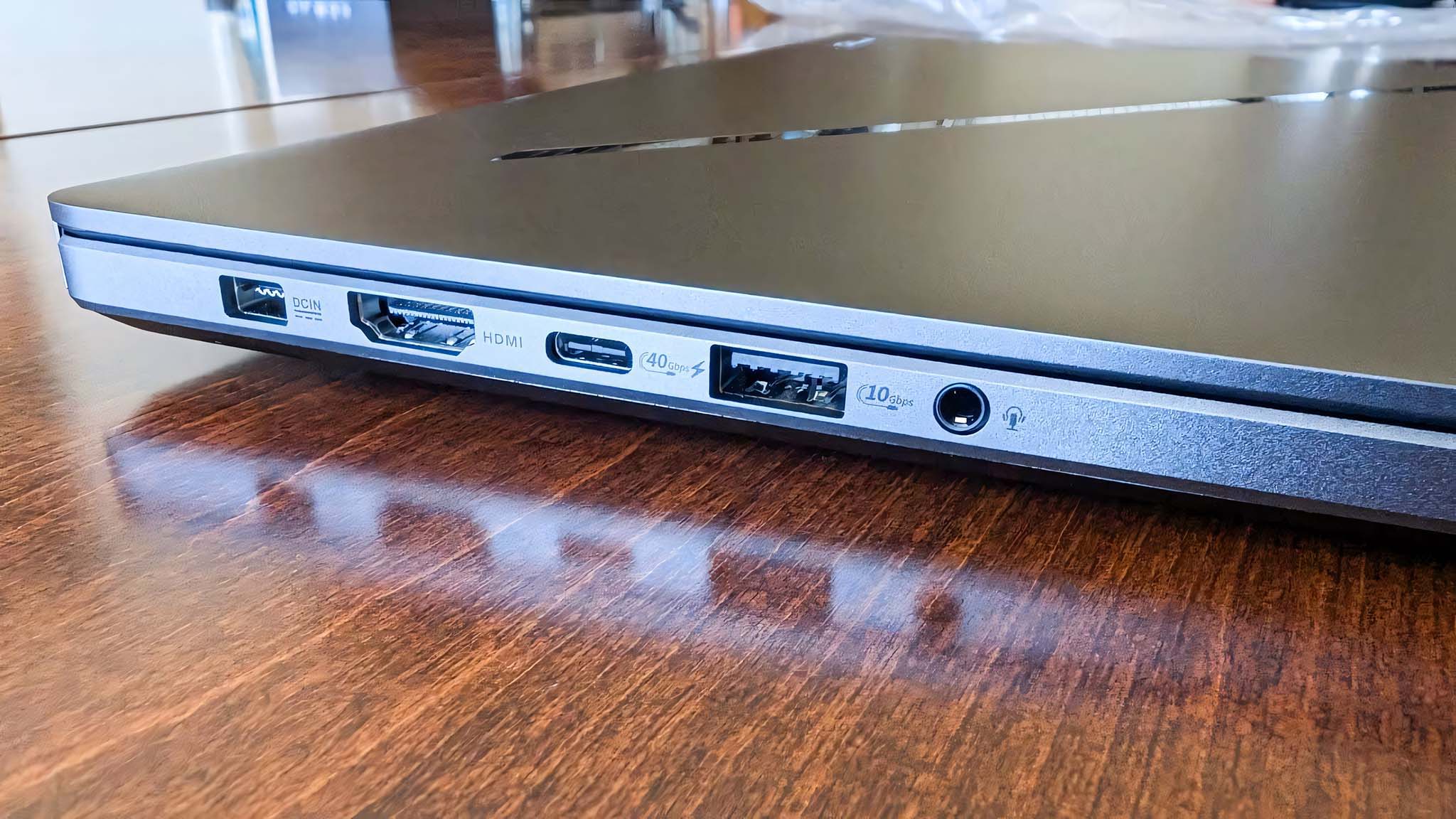
All in all, the Zephyrus G16 offers a good amount of ports, with one notable exception. Between the left and right side of this Zephyrus, there is a full-sized SD card reader, two USB-A ports, two USB-C ports, an HDMI port, a power port, and a 3.5mm headphone jack. You'll notice that one important connection is missing: an RJ45. Anyone wanting to use this laptop for online gaming, will want to consider getting one of the best Thunderbolt 4 hubs with an Ethernet port, so they can have a more stable connection than what Wi-Fi provides.
ASUS Zephyrus G16 (2024): Software and lighting
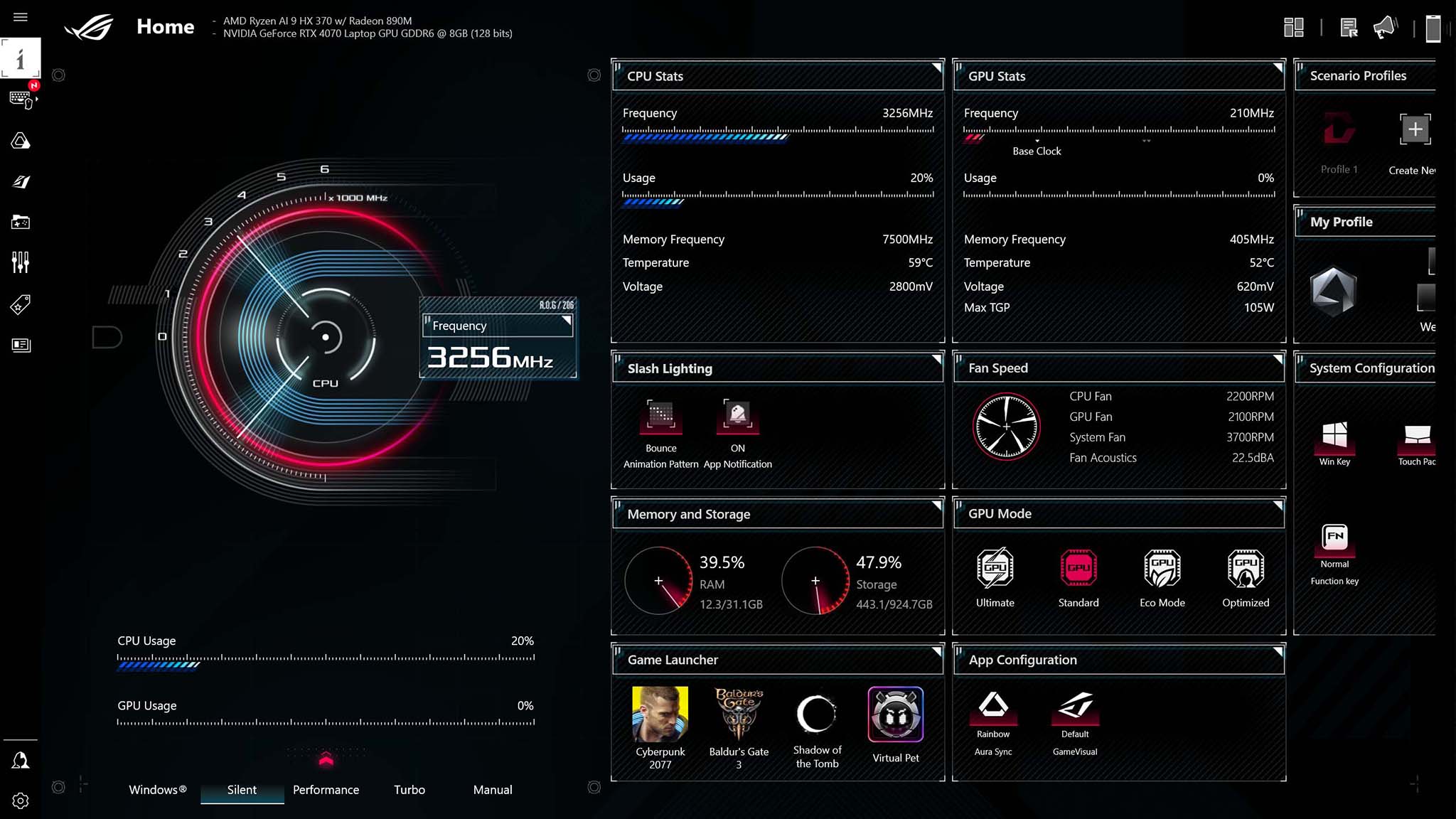
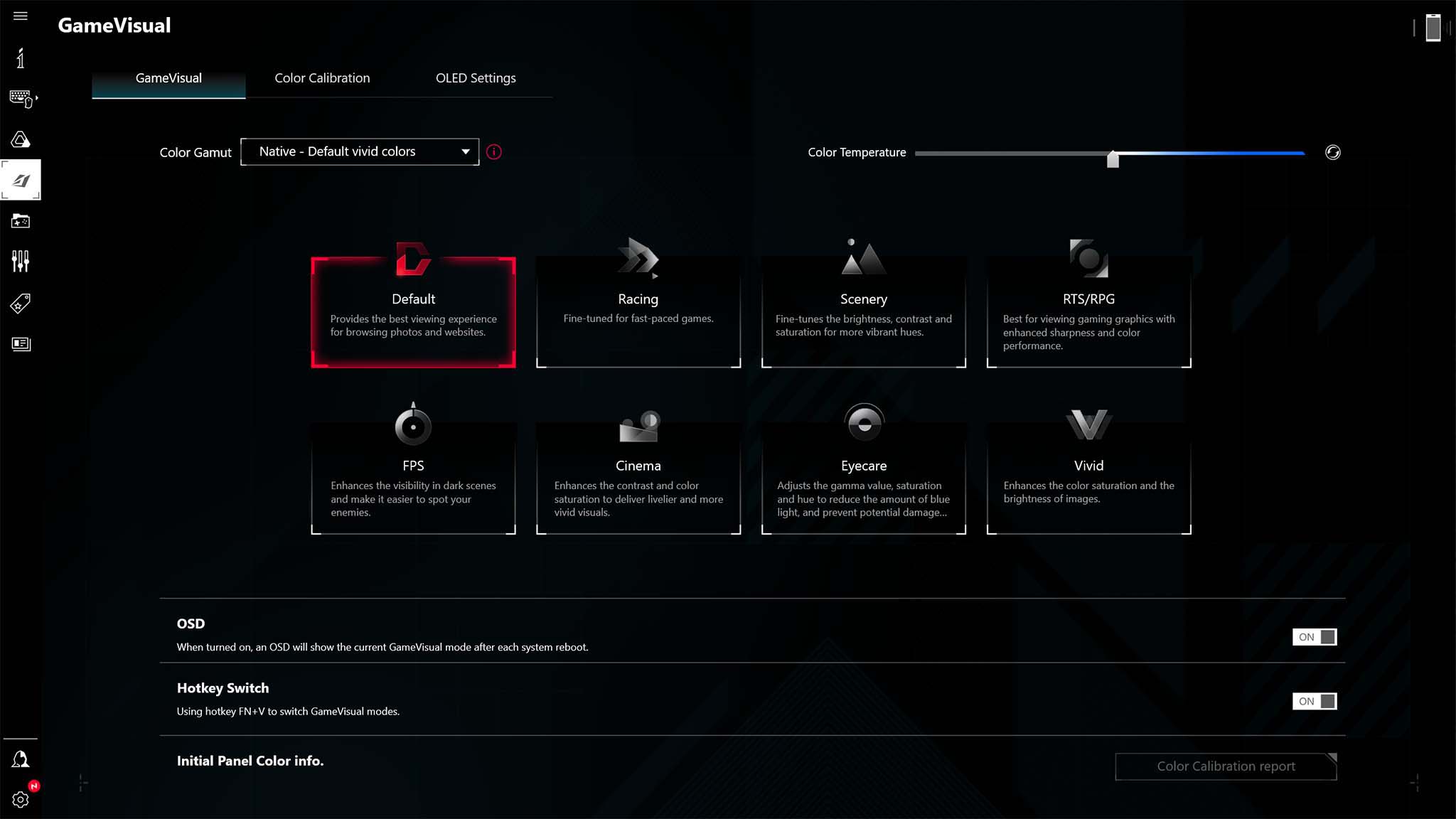
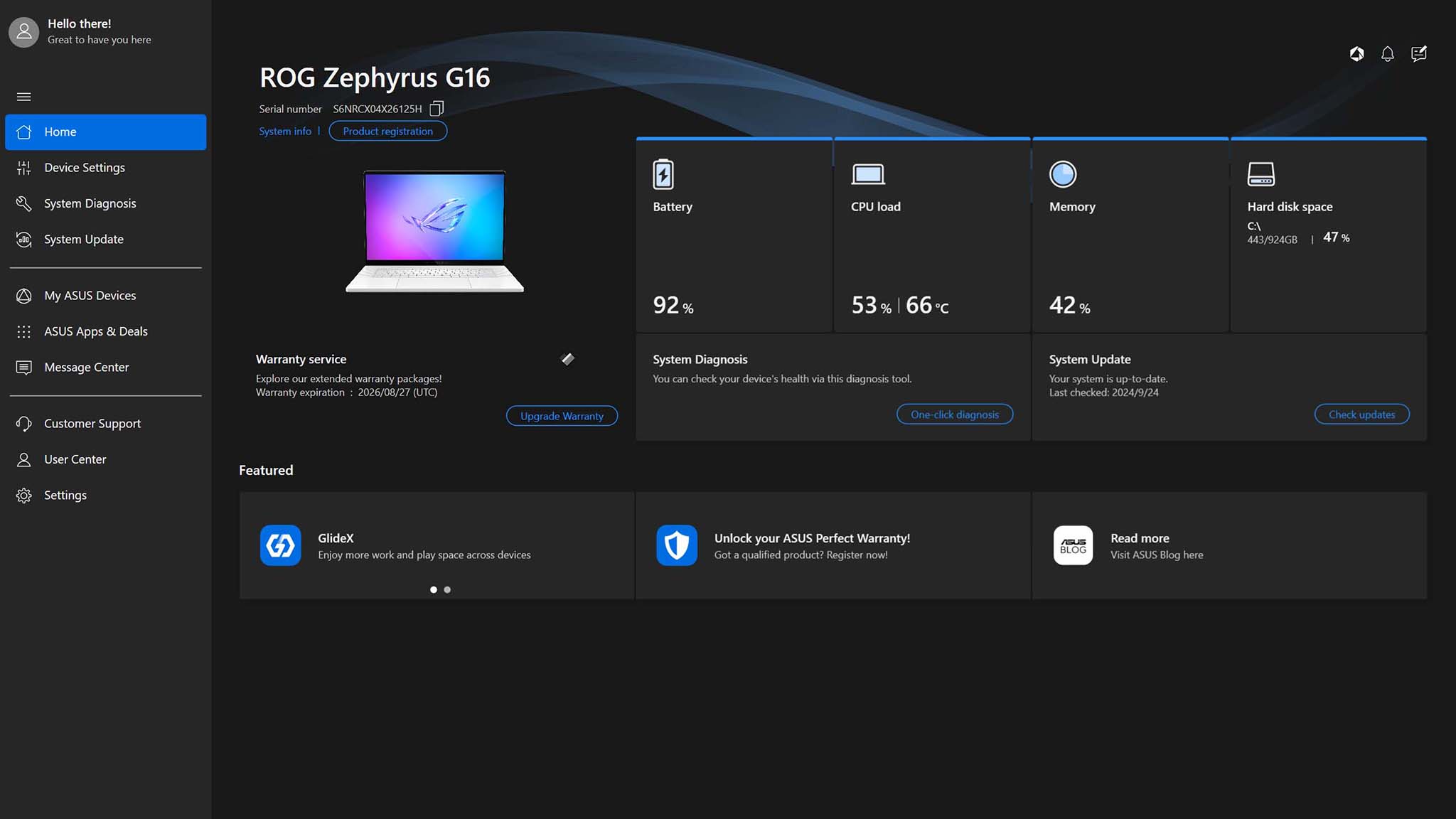
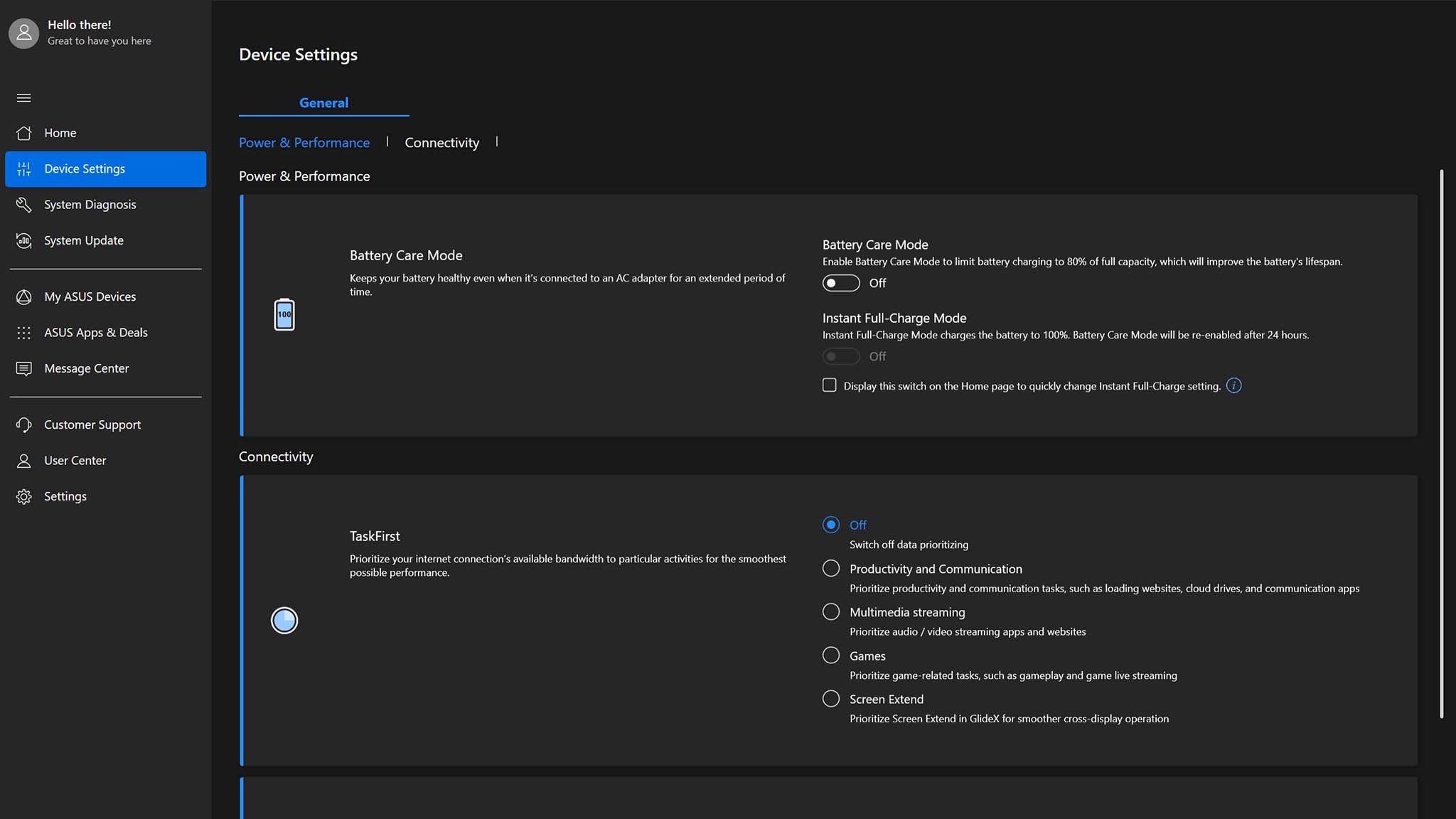
Software and RGB lighting highlights
- This laptop comes with a few programs, but the ones you'll interact with most are MyASUS and the gaming-focused Armoury Crate.
- MyASUS allows you to run system diagnostics, adjust settings, find updates, and contact customer support.
- Armoury Crate gives a more in-depth look at system performance while allowing users to set up Macros, adjust lighting, choose different game modes, and even launch their games.
- Effects and the brightness level of the Slash lighting on the lid can be customized or turned off completely.
- Design rating: 3.5/5
As with all major laptop companies, ASUS installs certain programs on its devices to improve the user experience. The most important programs that come installed on the Zephyrus are MyASUS, which handles general system maintenance, and Armoury Crate, which is largely gaming-focused.
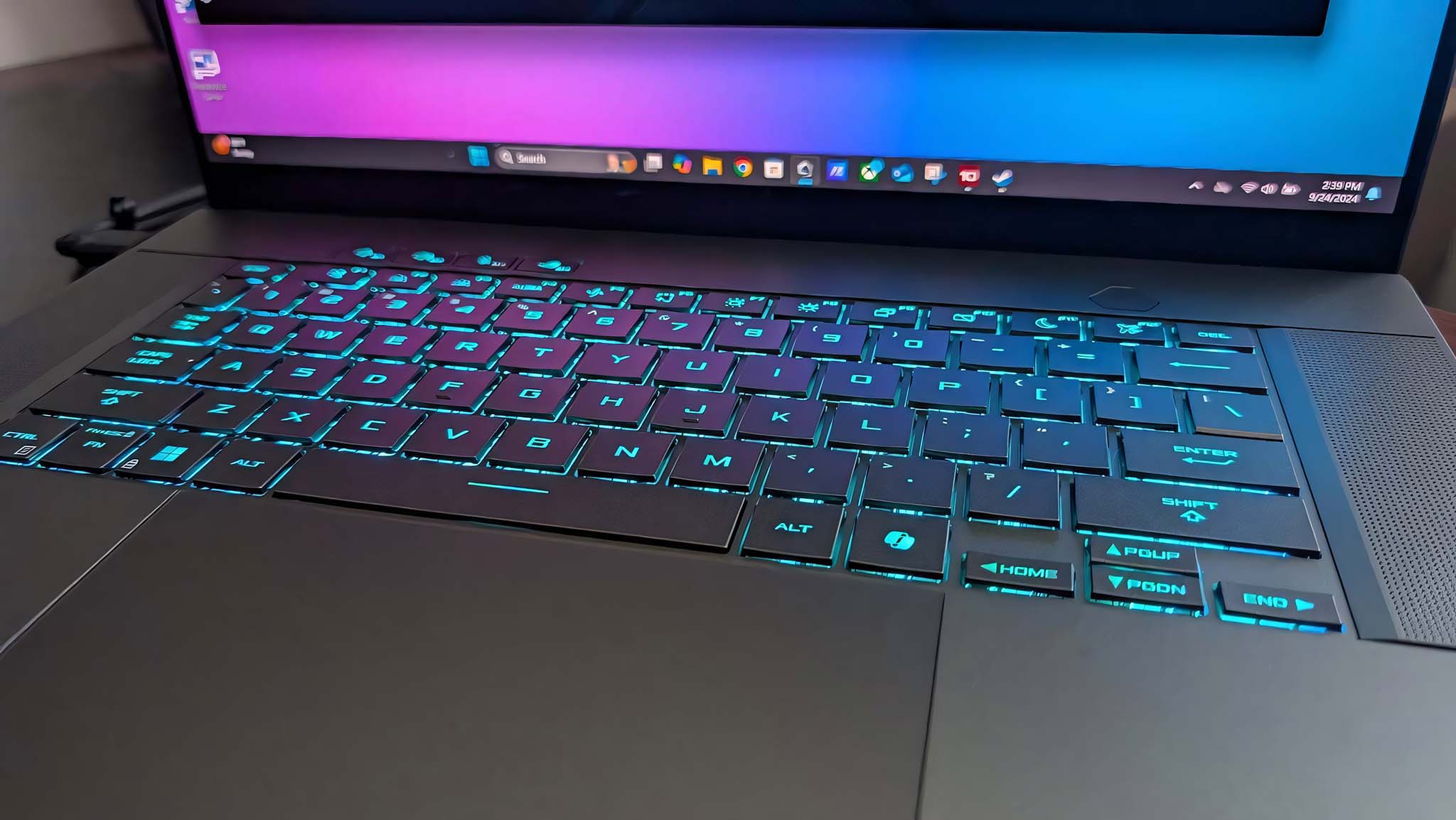
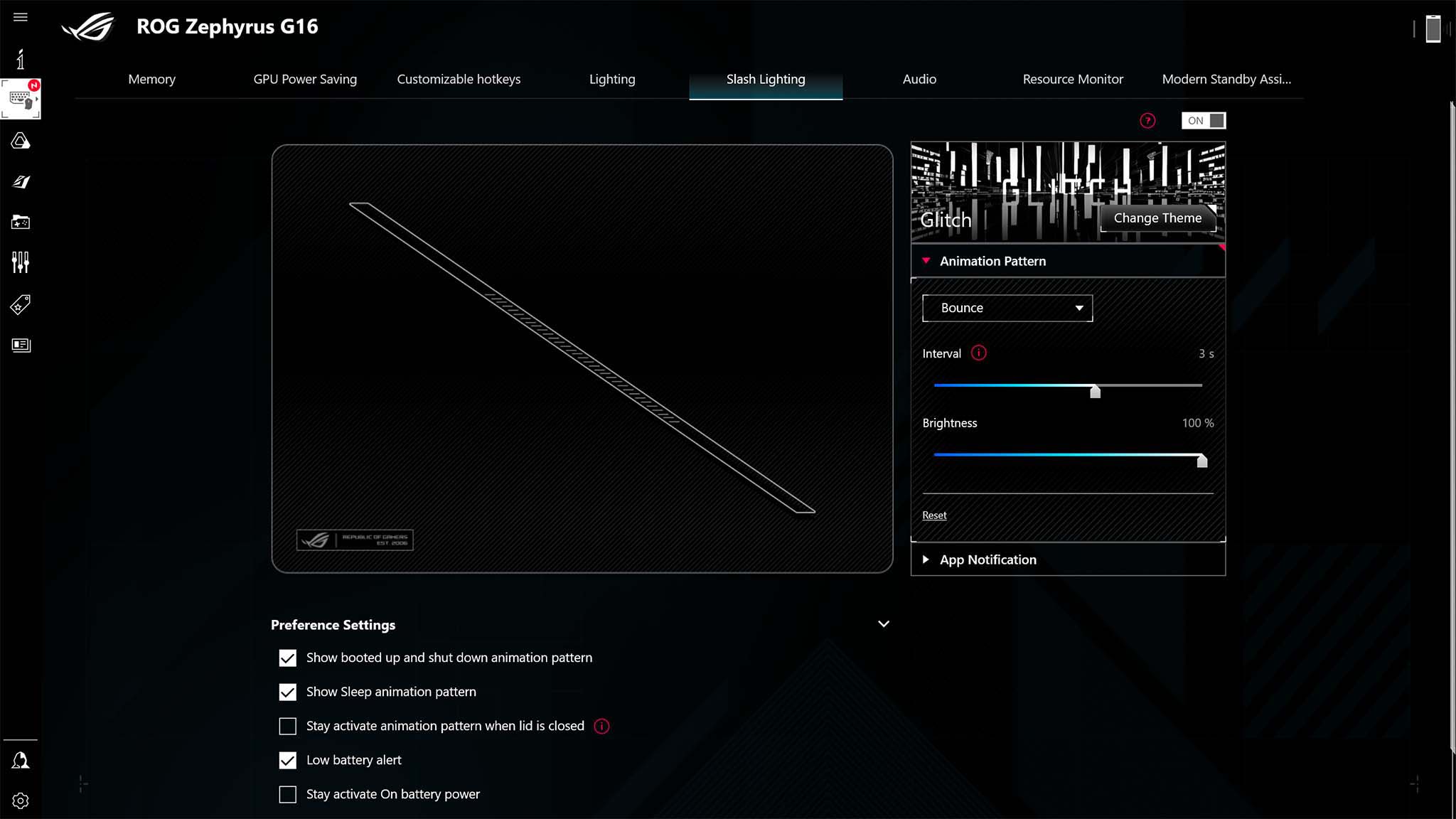
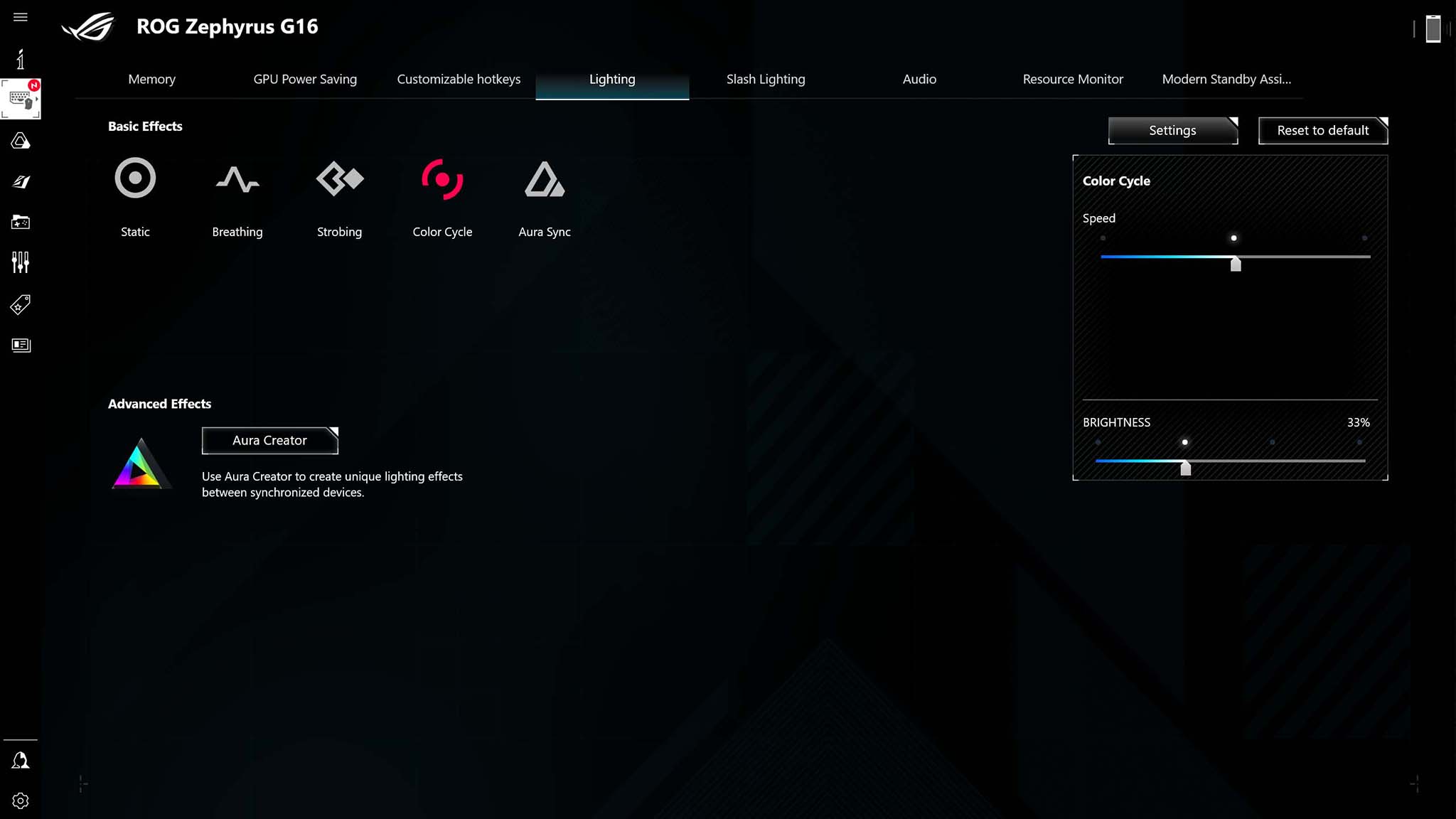
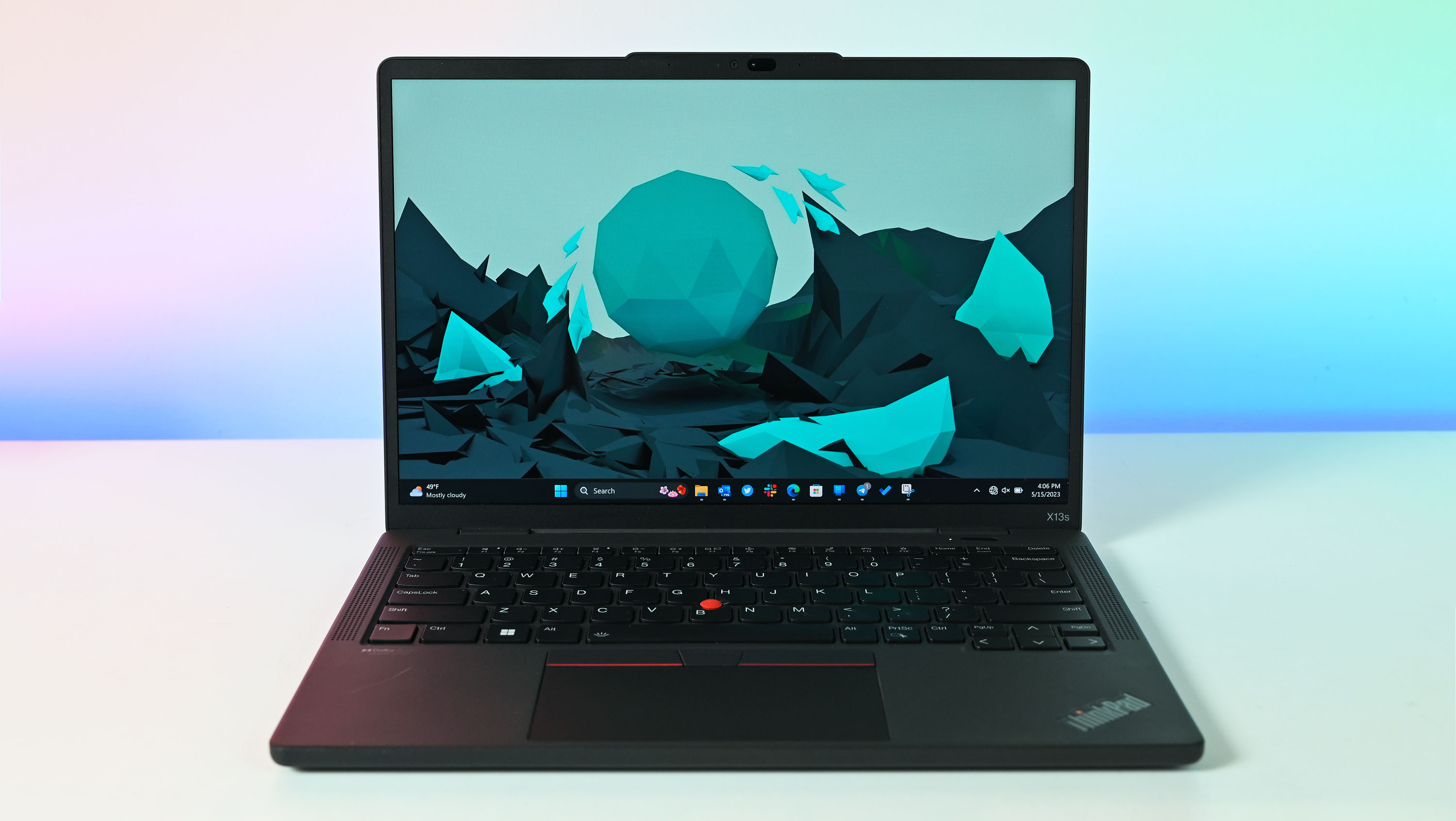
- Best gaming laptops
- Best Windows laptops
- Laptop review and buying guides
- Best gaming headsets
- Best gaming monitors
Various settings and options are available within both software, so you'll find yourself jumping between them when adjusting options. For instance, MyASUS provides quick access to customer support and allows me to run system diagnostics, but Armoury Crate allows me to view system performance, adjust lighting, and even create macros. Both programs offer a decent layout and plenty of helpful settings, but Armoury Crate is a bit more clunky to navigate due to its many submenus.
Speaking of lighting, the Slash bar that runs diagonally on the lid only shows up in white, but there are a few different effects you can choose from within Armoury Crate. I personally find that most of the effects look frantic and unappealing, which is why I choose to either have the Slash bar display a solid line or I turn it off.
Meanwhile, the keyboard backlighting can also be adjusted in Armoury Crate to provide a rainbow of color rather than the solid white that's in place by default. I can also adjust effect speeds and color brightness. I appreciate how battery-conscious Armoury Crate allows me to be; I can determine whether or not the lighting is on when the device is unplugged, in sleep mode, or on battery power.
ASUS Zephyrus G16 (2024): Display
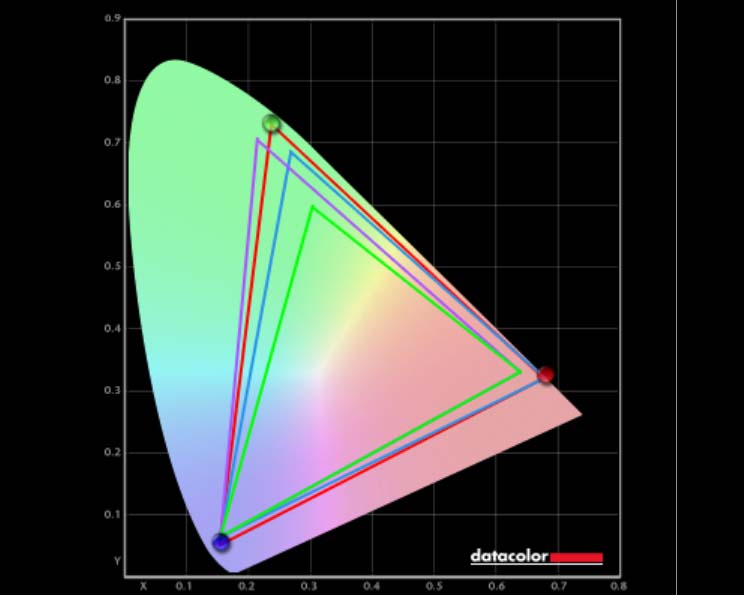
Display highlights
- This OLED display offers beautiful color and contrast to show off games to great effect.
- The ASUS ROG Zephyrus G16 (2024) GA605 OLED panel produced 100% of sRGB, 96% of AdobeRGB, and 100% of P3 in a color gamut test.
- Game visuals are smooth thanks to G-Sync support, a 240Hz refresh rate, and 0.2ms response time.
- It would be nicer if the screen got brighter than 400 nits, but the fact that it produces true black allows colors to stand out better than non-OLED displays.
- ASUS OLED Care helps prevent burn-in, while Flicker-Free Dimming helps protect your eyes.
- Display rating: 5/5
At this point in time, OLED displays are arguably the best panels for gaming due to their high refresh rates, response times, color range, and ability to produce true black. After all, this specific panel supports G-Sync, has a high 240Hz refresh rate, and a fast 0.2ms response time which all works together to provide excellent motion clarity. When it comes to colors, being able to produce true black means that pixels turn off when they mean to show black rather than showing grey, which allows nearby colors to pop in comparison. This panel also supports HDR and has a very crisp 2.5K resolution, which keeps game visuals looking clear and beautiful.
So, when I pulled out my colorimeter and did a color gamut test on the Zephyrus panel, I was not surprised to see that it produced a very good 100% of sRGB, 96% of AdobeRGB, and 100% of P3. Games look incredible on this display, with plenty of contrast, colorful variance, and defined details.
RELATED: OLED vs. QD-OLED vs. QLED vs. AMOLED vs. Mini LED display comparison.
While I was at it, I used the colorimeter to run a brightness and contrast test. ASUS says that this display can reach up to 500 nits, but in my own test it tapped out around 400 nits. This isn't nearly as bright as we'd like to see it get. The screen is also rather reflective, so it's best to use the laptop when it isn't near bright lights or windows. I personally had a hard time viewing some of the games I played while sitting in my kitchen next to my sliding glass door, until I drew my blinds shut.
OLED screens offer gorgeous color, but they have been known to experience screen burn-in. To prevent this kind of damage from happening, the Zephyrus G16 features ASUS OLED Care options within Armoury Crate that should prevent any imagery from getting burned into the display. This is also why a screensaver is set up by default, but you can turn this off within Windows settings if you wish.
On a similar note, there is also a slider for OLED Flicker-Free Dimming within Armoury Crate. This feature was designed to help prevent eye strain by reducing the amount of on-screen flashing that might occur on OLED panels. Just note that it isn't effective when used at lower brightness levels. In fact, whenever I lower the brightness significantly, the laptop reminds me to take a break if I'm feeling any eye strain.
ASUS Zephyrus G16 (2024): Performance and gaming
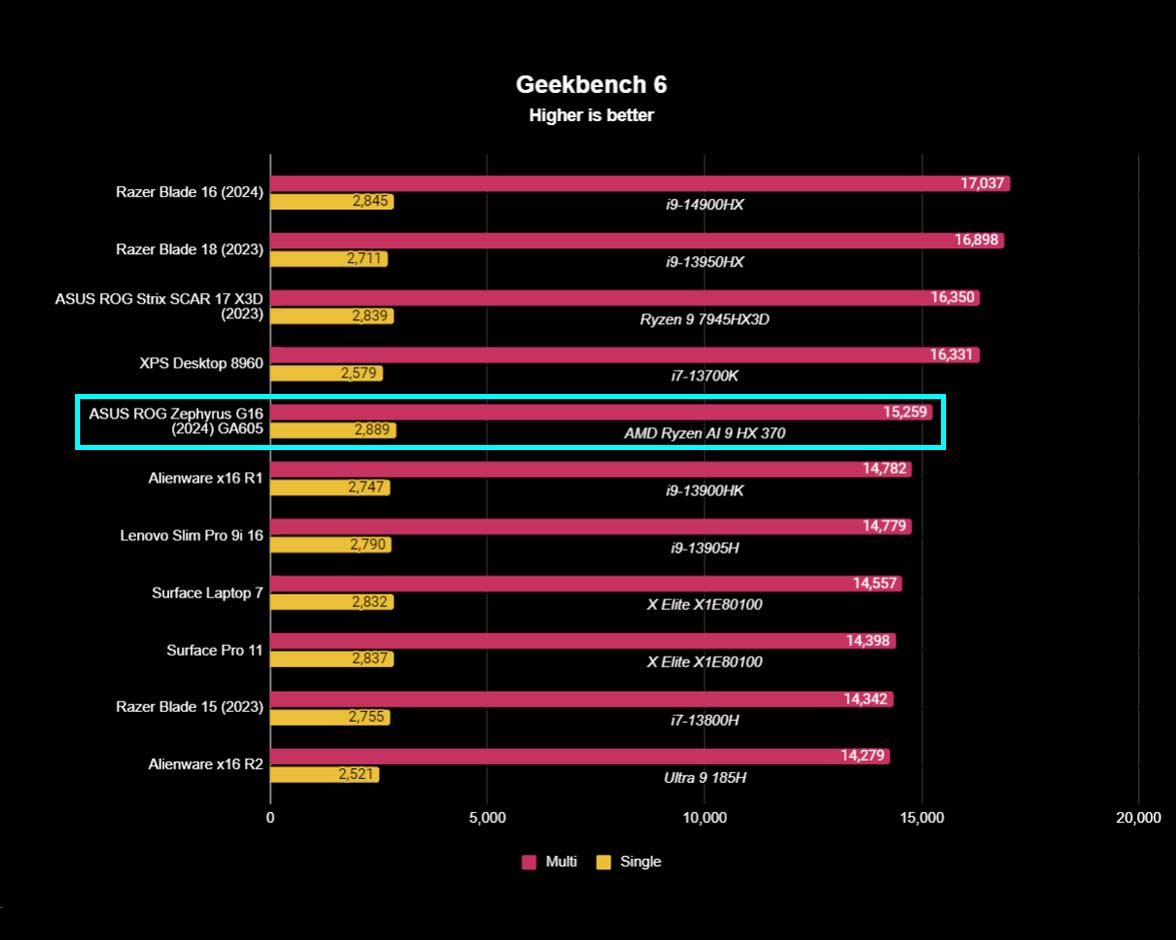
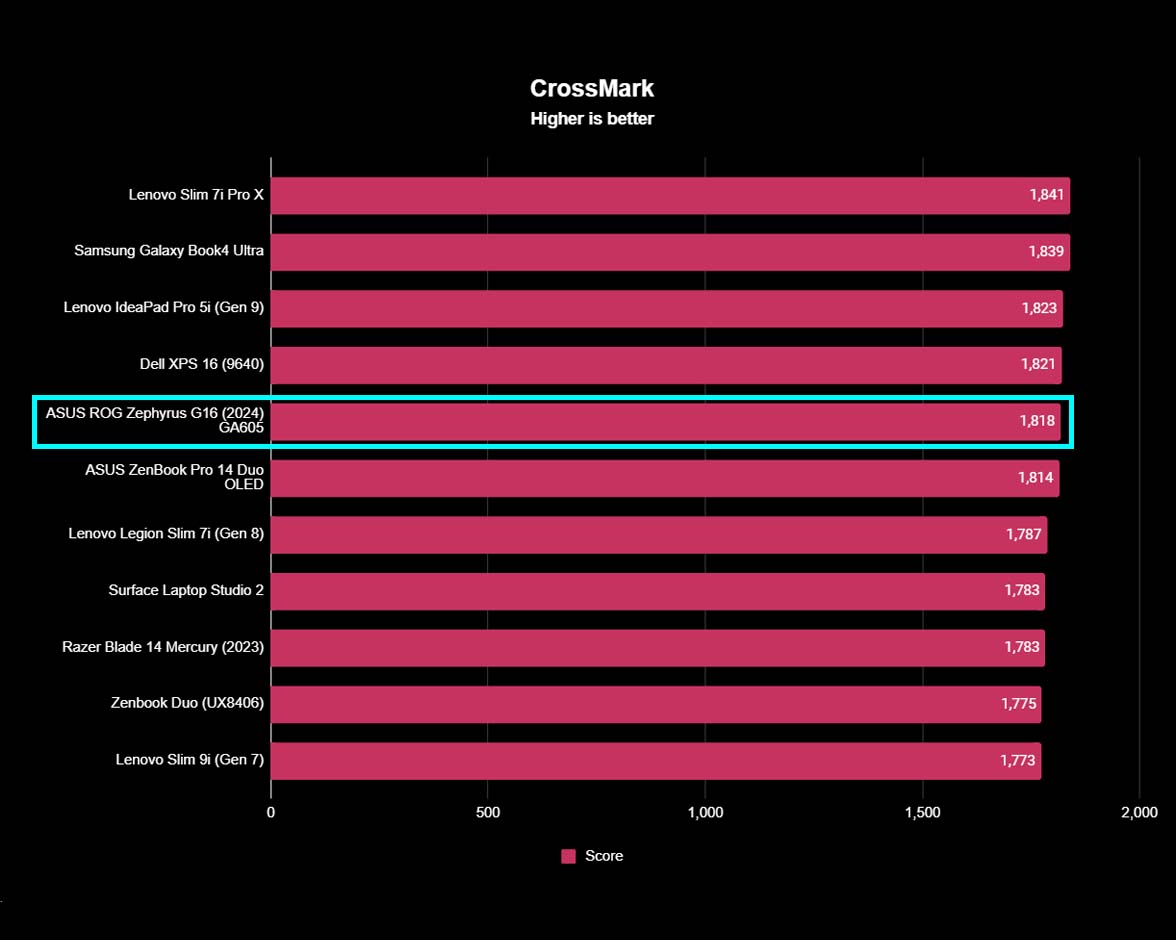
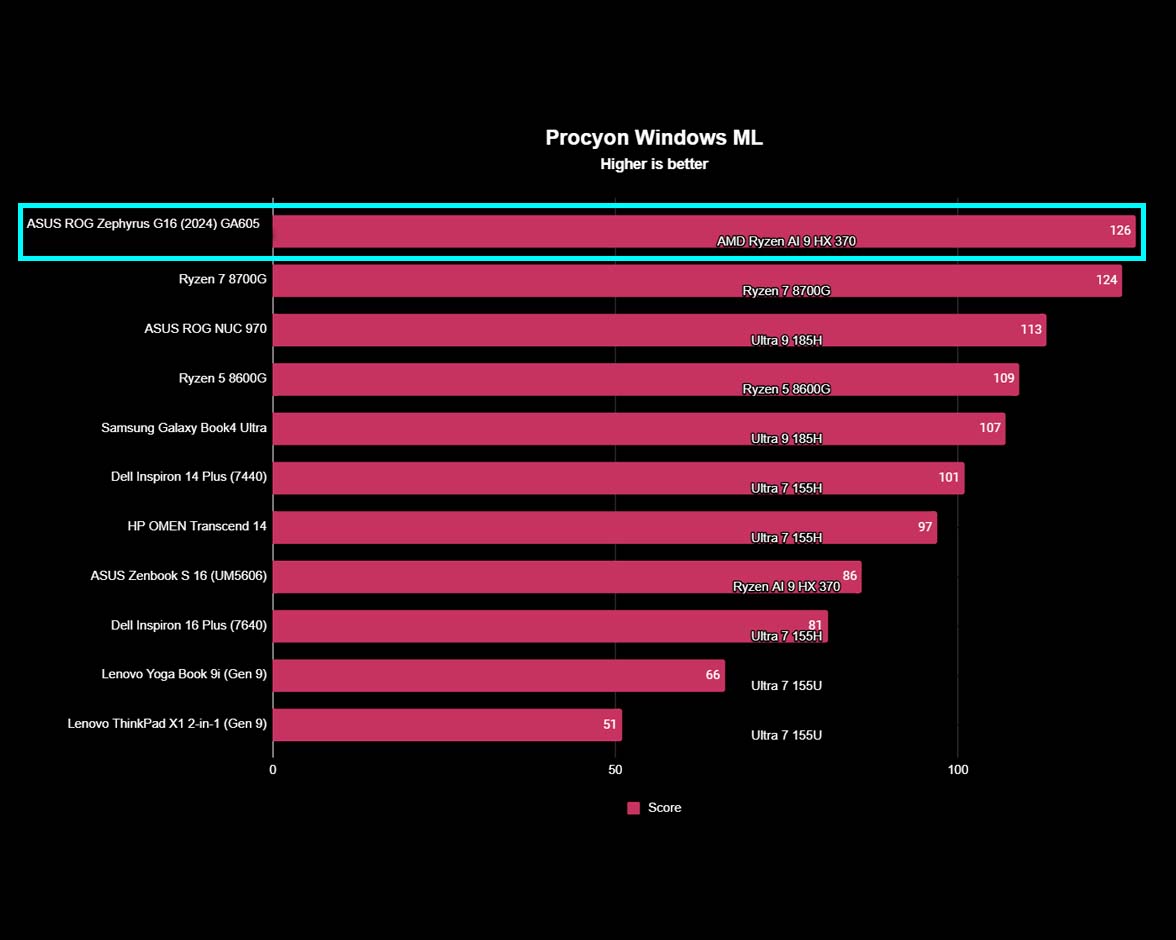
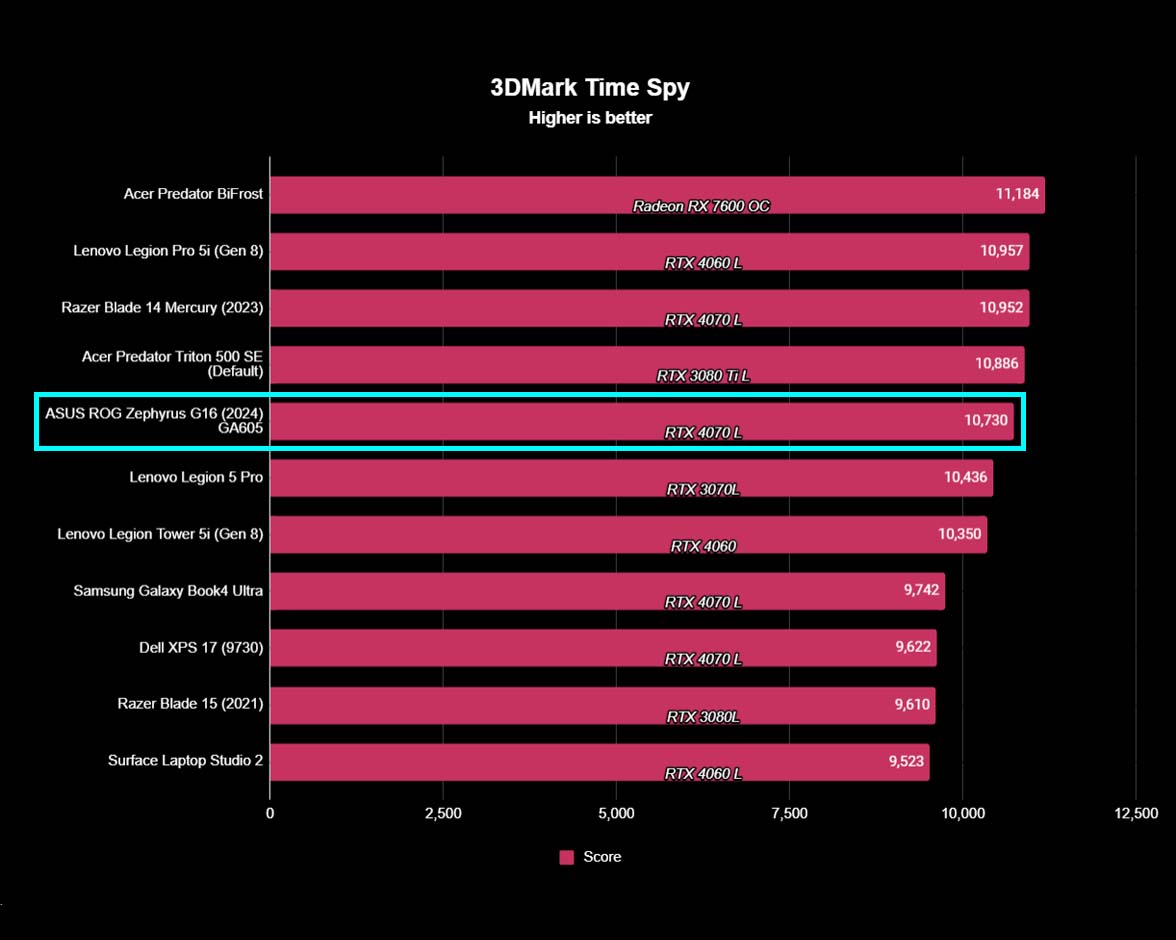
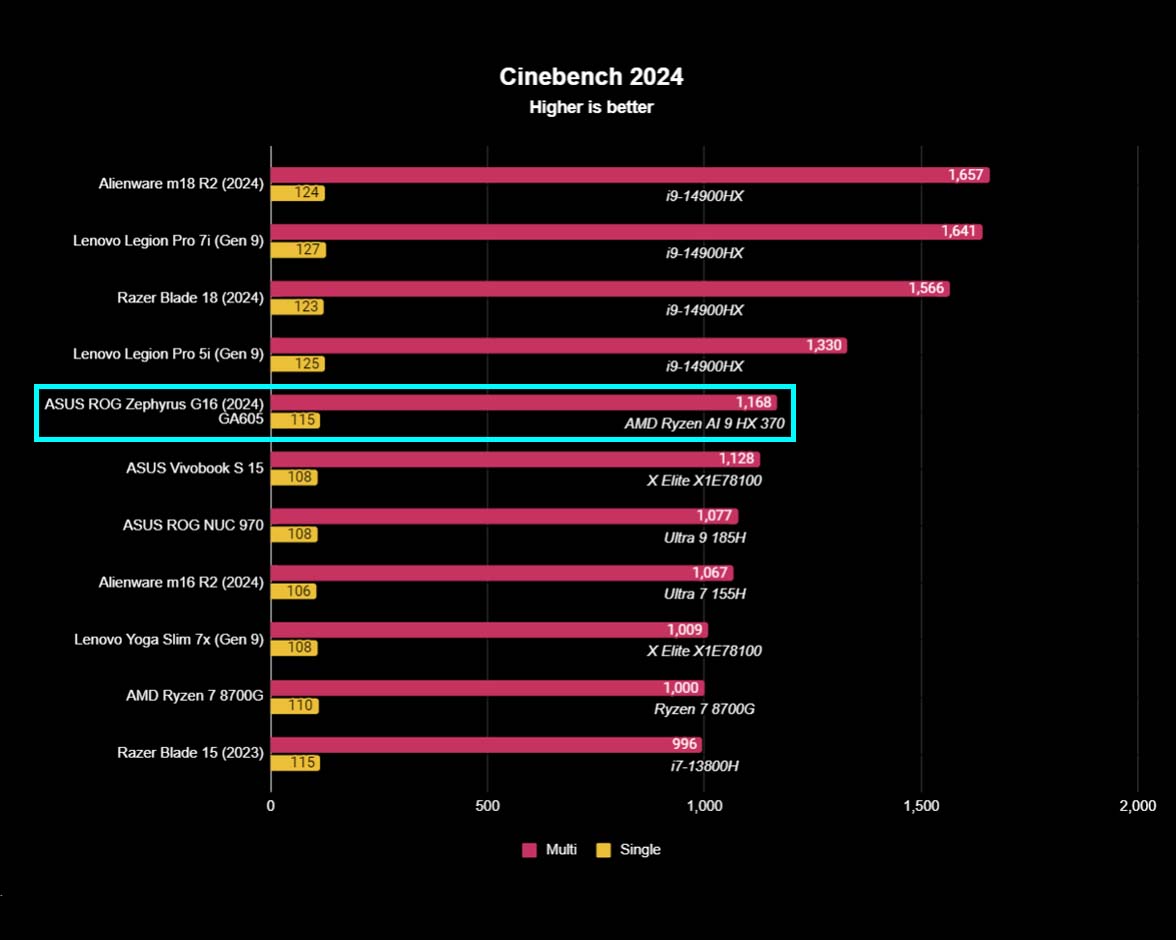
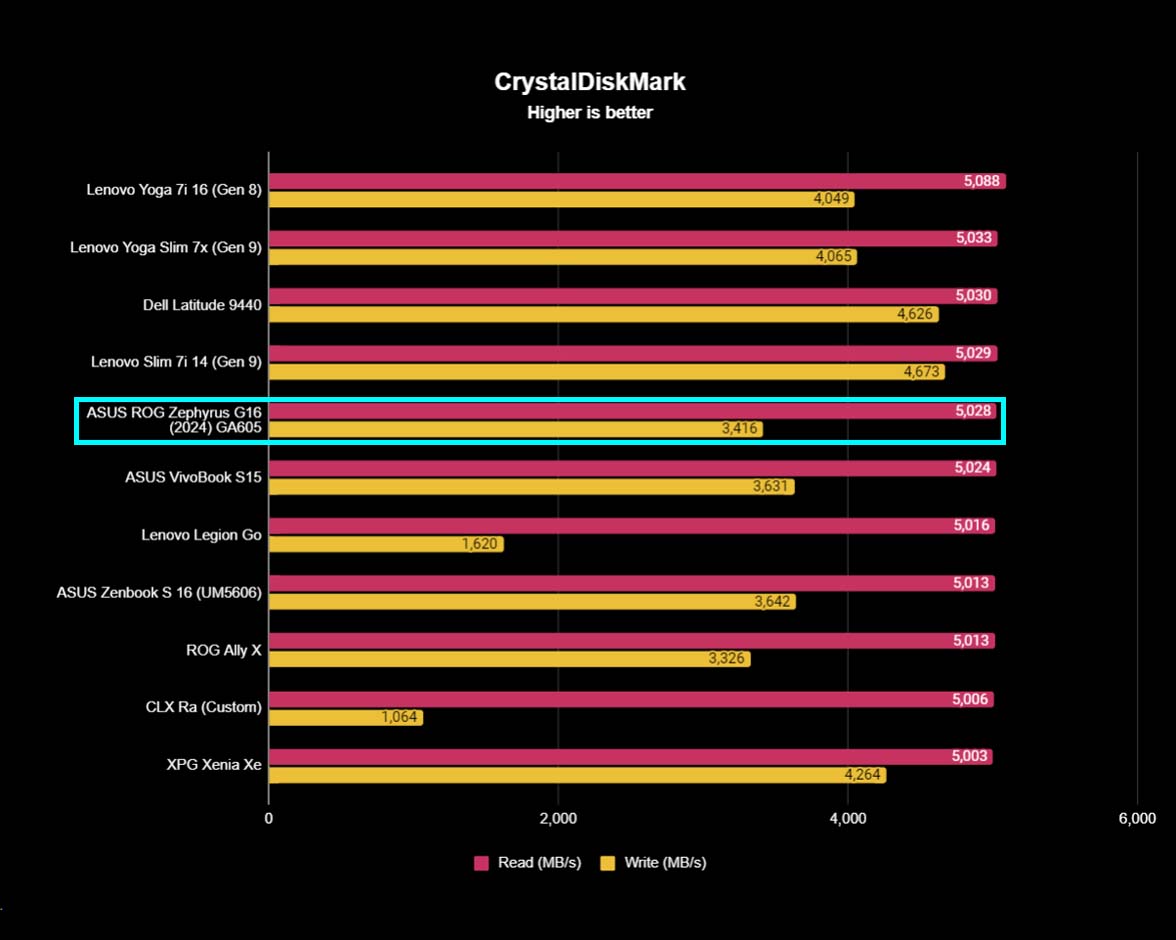
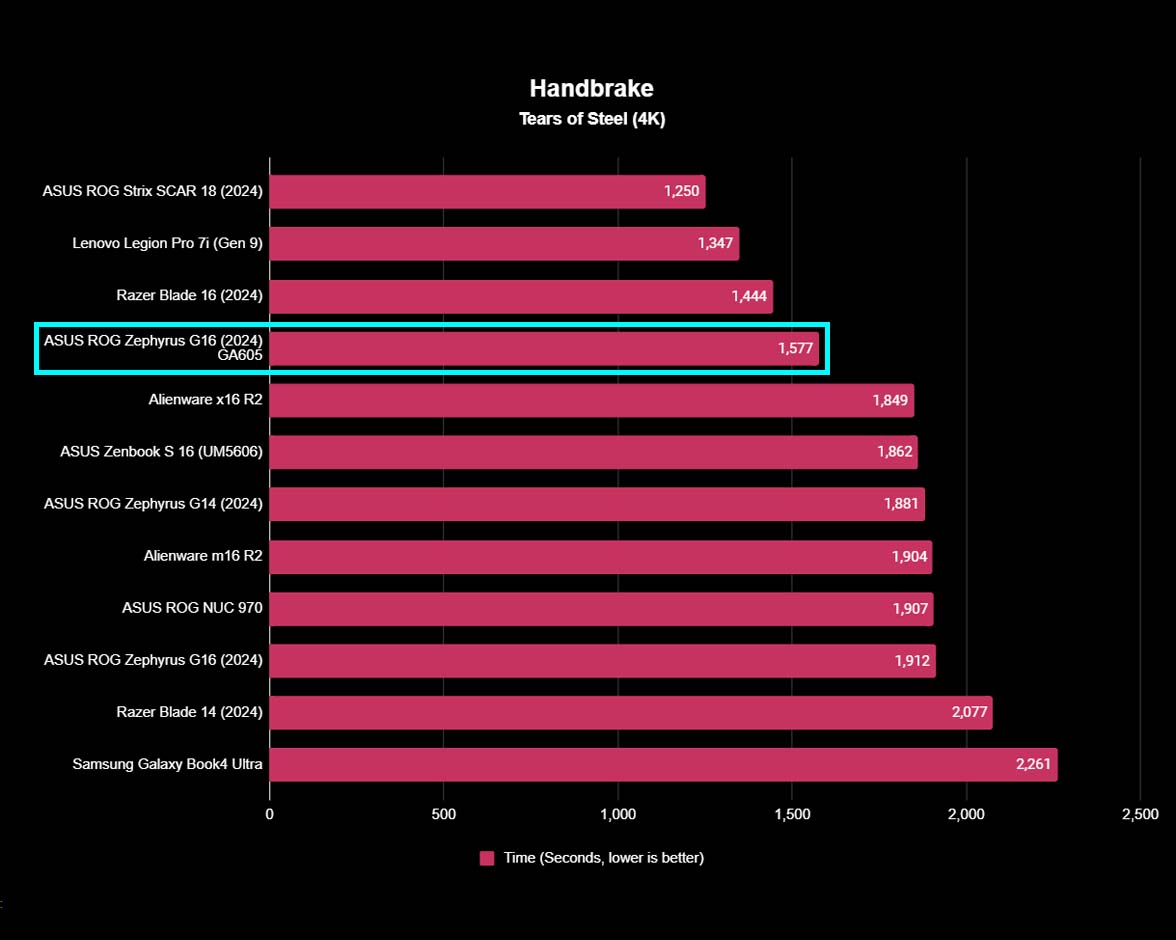
Performance & gaming highlights
- Overall, the Zephyrus G16 GA605 offers solid every day and gaming performance.
- The AMD model of the Zephyrus sometimes performed lower and sometimes performed higher than the Intel model.
- Fans never get too loud, and the laptop does a great job of keeping itself decently cool.
- Performance rating: 4/5
After playing video games and using the laptop for about a week, I confirmed that this Zephyrus G16 GA605 runs very smoothly and offers a great playing experience. But to get a more quantitative read on performance, I ran the laptop through our usual gauntlet of benchmark testing. I paid particular attention to how the AMD-toting Zephyrus G16 GA605 compared against the same benchmark tests that I'd previously run the Intel-toting Zephyrus G16 GU605 through. There was some variance, but the long and short of it is that both laptops offer great performance based on the configurations they have.
To start, I ran a Cinebench R24 benchmark to see how well the AMD AI CPU handles 3D rendering. It earned a solid multi-core score of 1,168 and a single-core score of 115. When I tested the Intel Zephrus G16 earlier this year, I did so with Cinebench R23, so I also ran this new laptop on this older version, so I could compare results with the Intel Zephrus G16.
The AMD version earned a multi-core score of 21,809 and a single-core score of 940. Meanwhile, the Intel version earned a lower 18,399 multi-core score but a higher 1,862 single-core score. Overall, the multi-core score is more important for gaming, so the AMD model outperformed the Intel model in this instance.
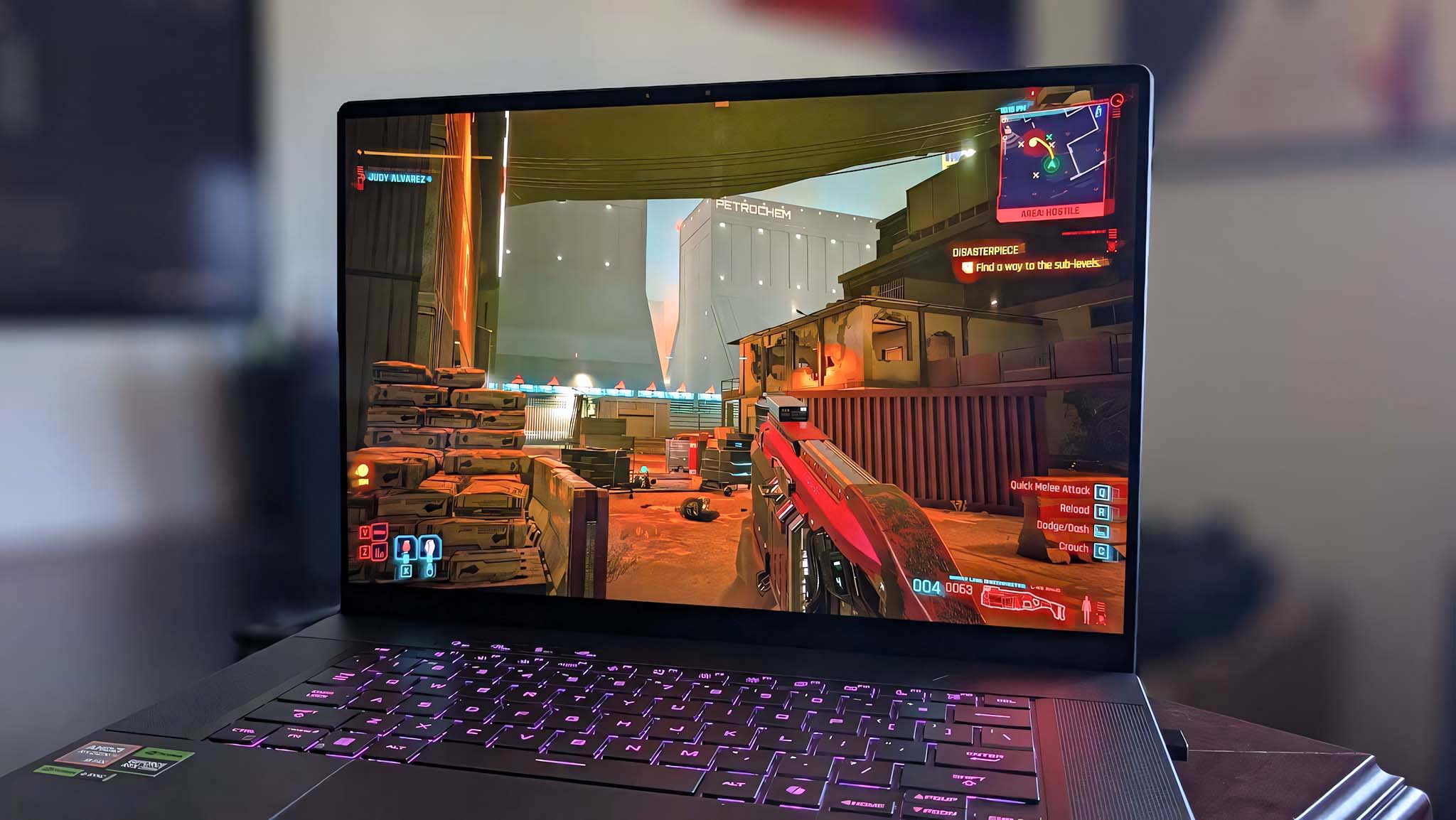
I then ran Geekbench 6 to check CPU performance, and the AMD Ryzen AI 9 HX 370 earned a multi-core score of 15,259 and a single-core score of 2,889. I, unfortunately, don't have any numbers from the Intel Zephryus G16 to compare this against because the program wasn't working at the time of that testing. However, this AMD score is very good given that it's higher than all other AI CPUs we've tested, and it's a rather high score compared to non-AI CPU's too.
To get a handle on this Zephyrus G16's GPU performance, I ran 3DMark's GPU Time Spy benchmark. The AMD model with its RTX 4070 L scored 10,730, whereas the Intel model with its RTX 4080 L understandably scored a bit higher at 13,249. Overall, this is a good performance. It's not the best results we've seen from an RTX 4070 L GPU, but it's definitely not the worst either. All-in-all, it is in-line with where it should be.
When it came time to run the CrystalDiskMark SSD benchmark, the AMD-toting GA605 earned a 5,028 MB/s read speed and a 3,416 MB/s write speed, which is notably lower than the Intel-toting GU605's 7,063 MB/s read speed and 5,226 MB/s write speed. What's more, it's lower than where we'd like to see a gaming laptop's SSD score be. This means the AMD model isn't as fast when it comes to accessing stored data or saving files.
As a means to check general system performance, I can the Crossmark benchmark and discovered that the AMD-toting Zephyrus earned a higher 1,818 score compared to the Intel Zephryus' slightly lower 1,783 score. This is a great score for any laptop and basically means that the components used within the AMD model work together very well.
Since this is an AI PC, I ran a Procyon Windows ML benchmark, and the AMD Ryzen AI 9 HX 370 earned a score of 126, which is the highest score we've seen for an AI CPU. This means that this AMD AI-boosted processor can tackle local AI tasks very efficiently, which may or may not be useful depending on the types of programs and games you run on the laptop.
Buttery smooth gaming performance
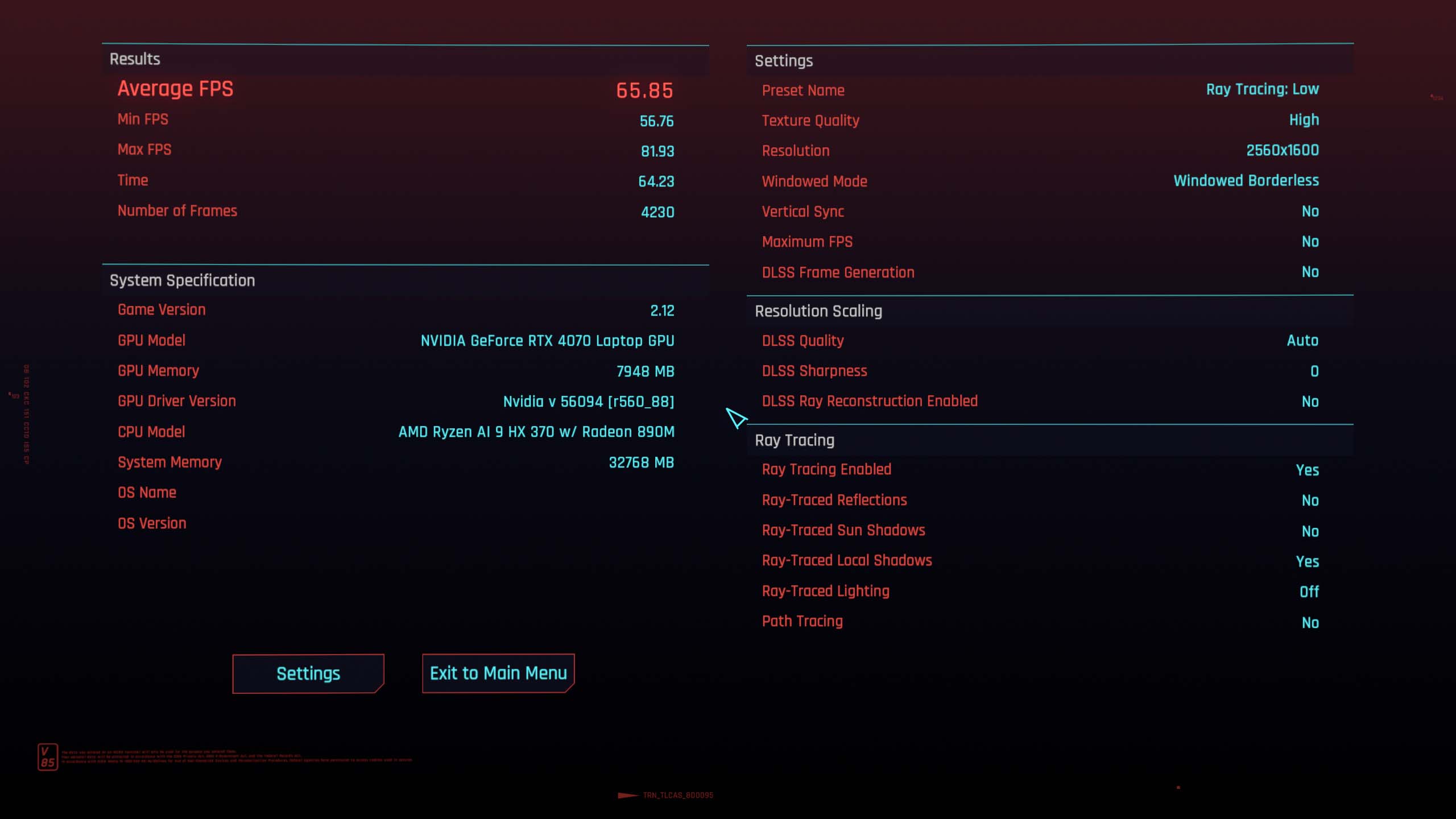
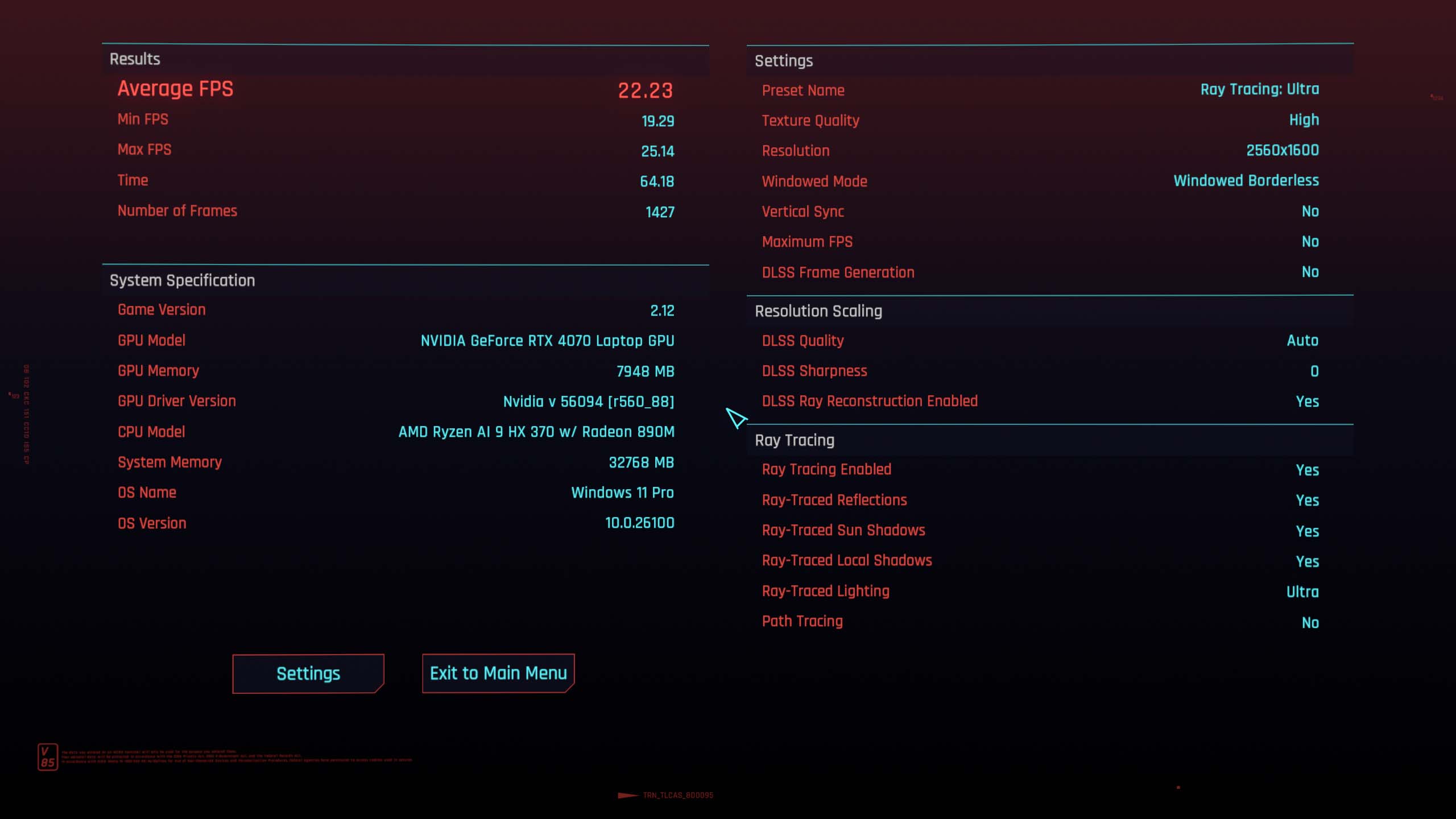
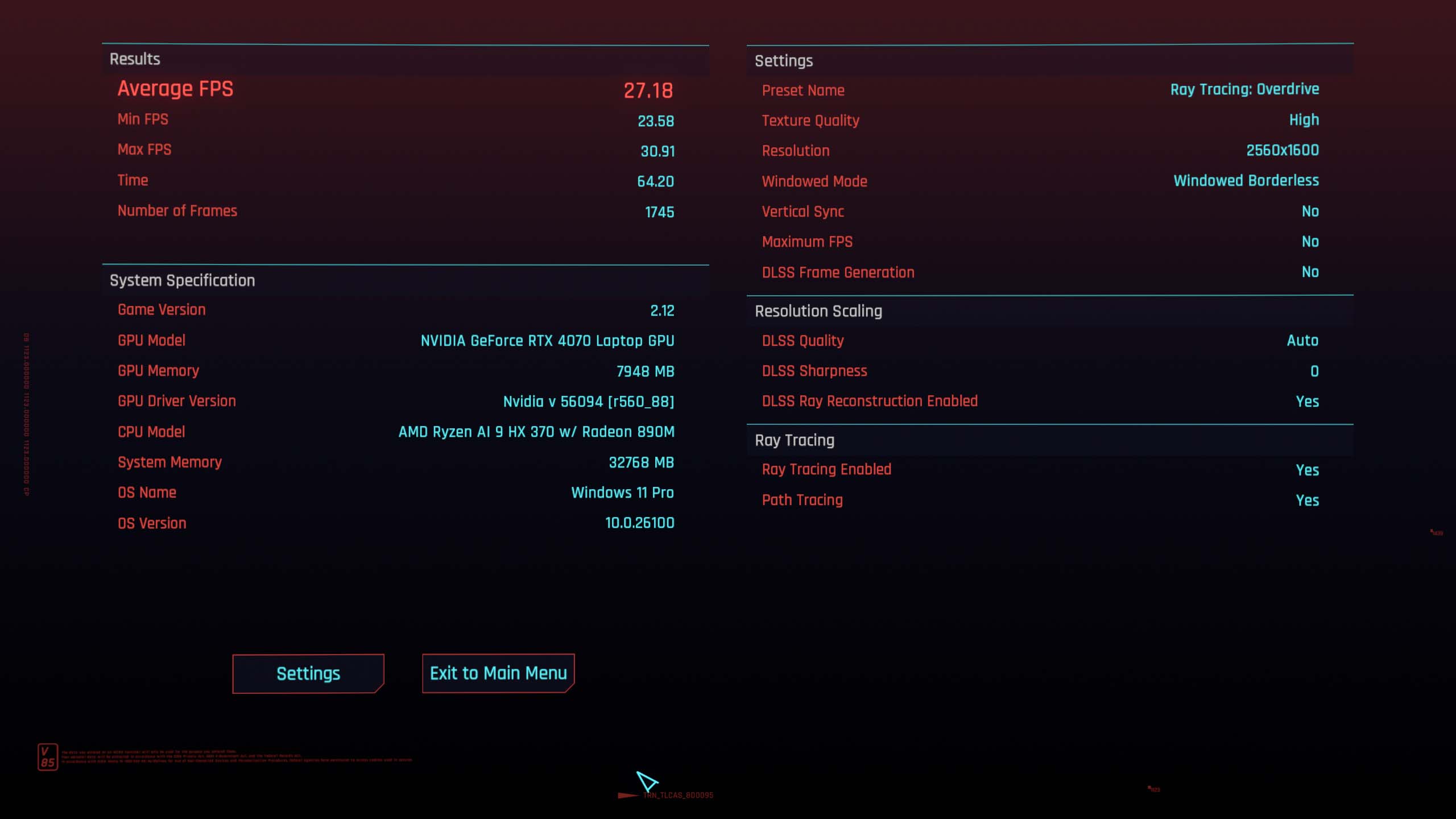
OK, we've seen general benchmark performance, but how well does the Zephrus handle gaming? After doing a clean install of the latest NVIDIA GeForce Game Ready Drivers and playing Cyberpunk 2077 for several minutes, I navigated to the in-game benchmark and ran some tests. I started things off by putting graphics to the preset Ray Tracing: Low setting with 2560 x 1600 resolution. At these settings, the laptops reached an average 65.85 FPS (frames per second). I then upped the settings to Ray Tracing: Ultra while keeping everything else the same, and it managed an average 22.23 FPS. These aren't overly amazing, but they are respectable results.
Just for kicks, I also ramped up graphics to the Ray Tracing: Overdrive setting, turned on both Path Tracing and Ray Reconstruction, and then ran the test. The laptop managed an average of 27.18 FPS. These are very high settings that many laptops cannot keep up with, so even though it's lower than the minimum 30 FPS console standard, it shows that this is a powerful gaming laptop. That said, the Intel model that I previously tested was able to hit an average 36.48 FPS in this same Ray Tracing: Overdrive testing, which is better.
Thermals and fan noises
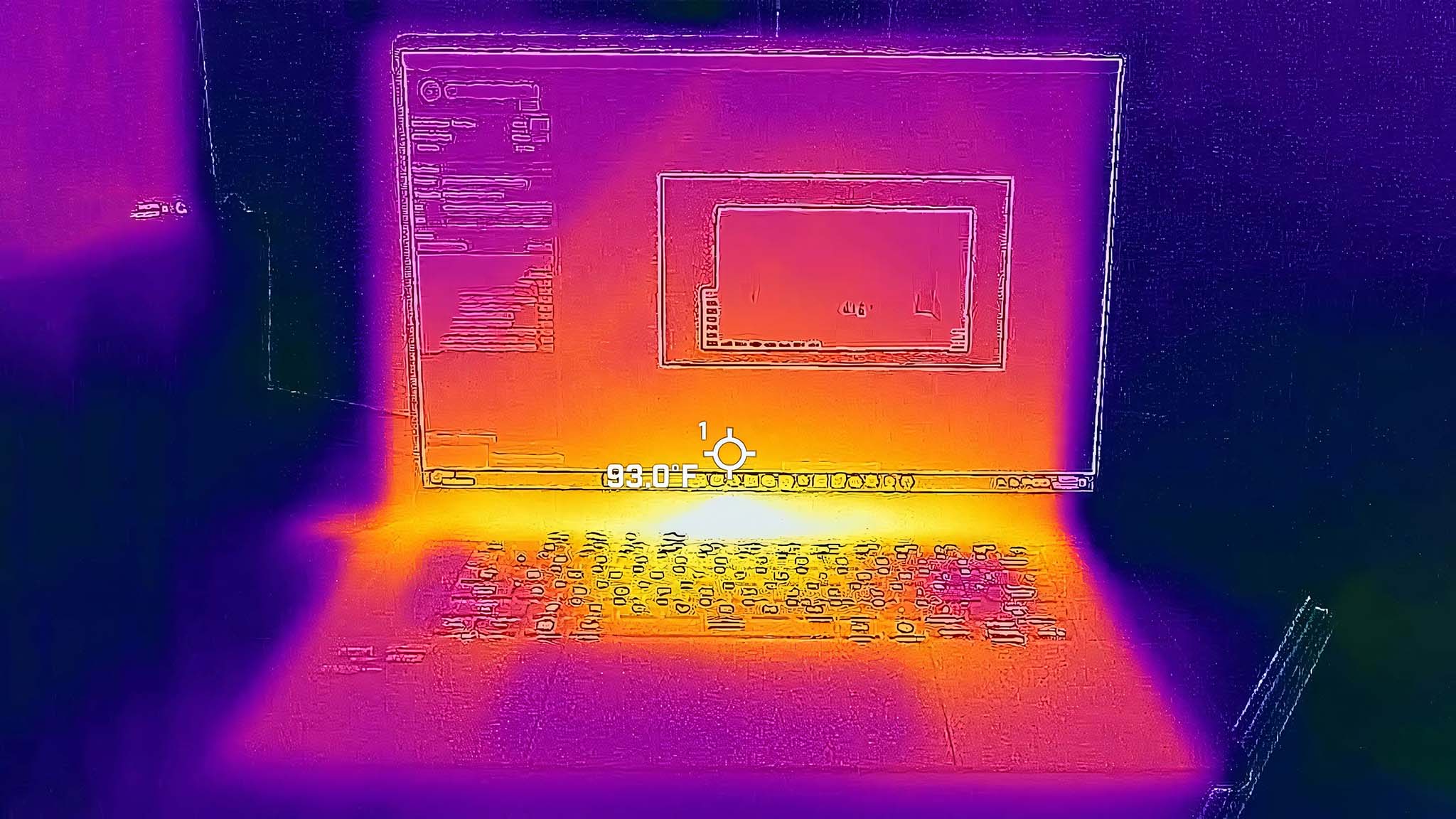
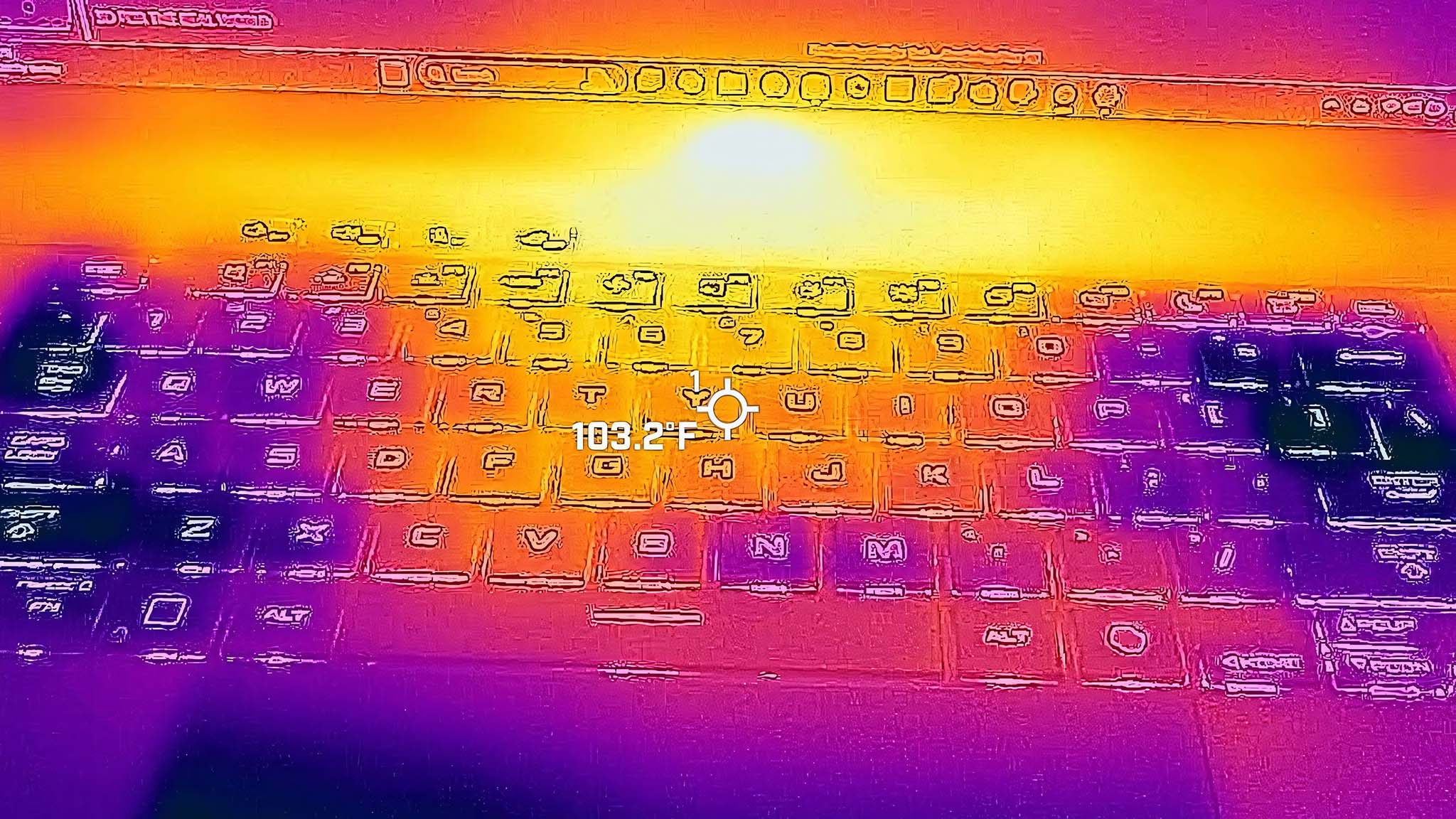
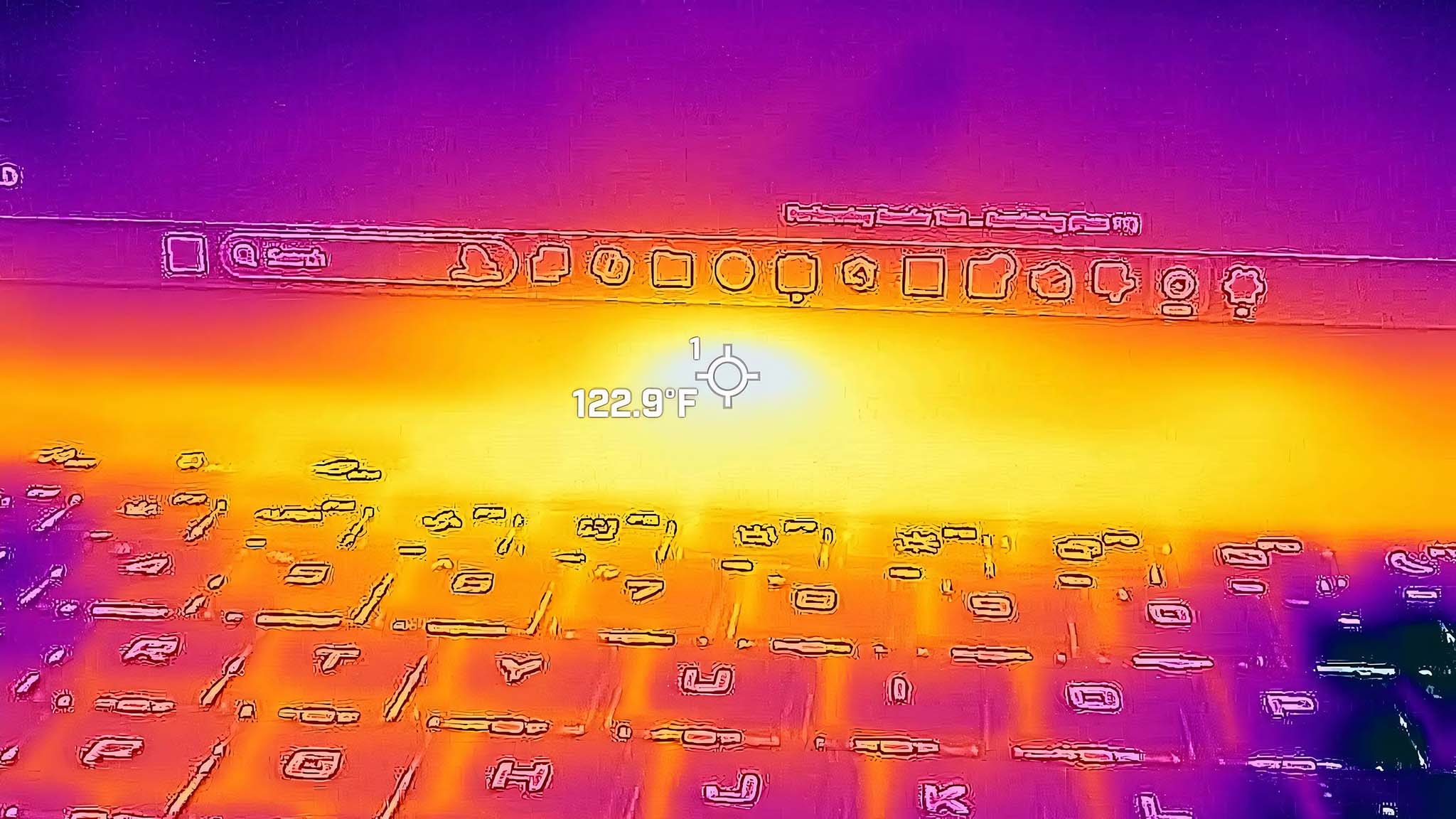

To get a sense for the laptop's cooling capabilities, I ran a Cinebench CPU stress test for 20 minutes, and then I pulled out my thermal camera and took measurements. The hottest part of the laptop is the area above the keyboard right below the display, where it peaked at 122 degrees F (~50 degrees C). The keyboard itself also gets decently warm in the center, but never hot to the touch, at a max 103 degrees F (~39 degrees C). Meanwhile, the vent area at the back of the laptop measured in at 110 degrees F (~43 degrees C). Unlike some other laptops out there, the sides near the ports don't get that warm at all. I also found that the bottom of the laptop never got too hot for my lap.
During this CPU stress test, I also pulled out my decibelmeter and determined that the fans were hitting a max 49.2 dB. This isn't super loud, but it is something that you will notice while using the Zephyrus G16.
ASUS Zephyrus G16 (2024): Battery life
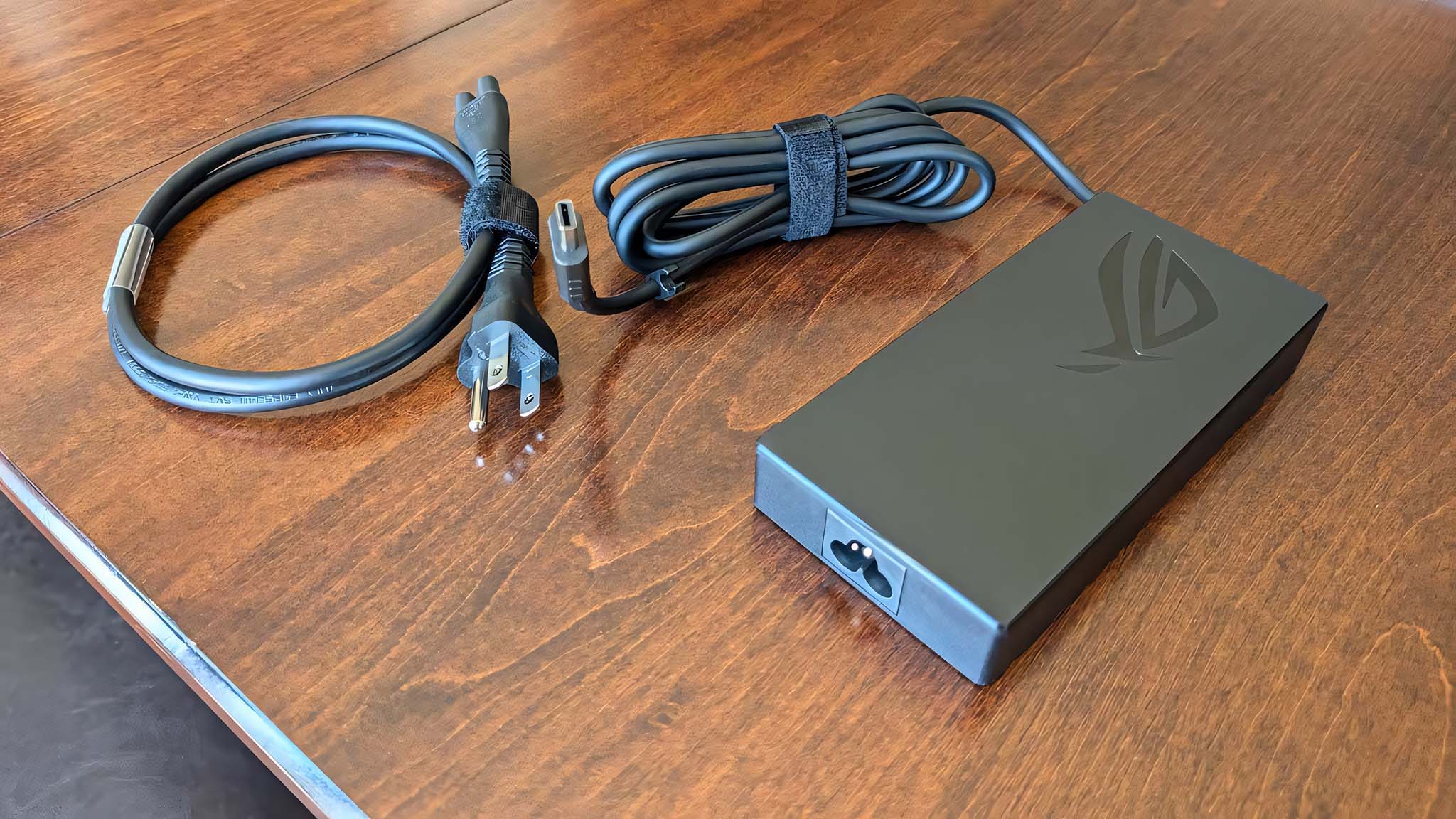
Battery highlights
- The laptop only lasts about four hours and 27 when it's used for simple tasks like browsing the internet and watching shows in Silent mode.
- When playing demanding video games, the laptop only lasts about an hour in Performance mode.
- This Zephyrus G16 can be charged with a compatible USB-C cable, but it comes with a DCI cable in the box.
- Battery rating: 3/5
The unfortunate truth with gaming laptops is that they usually have pretty short battery life; the same is true of the Zephyrus G16 GA605. When doing simple tasks like browsing the web, streaming shows, and running basic software in Silent mode, the laptop can last for up to four hours and 27 minutes before running out of juice. This is pretty short and isn't even long enough to last a full day of work or school without needing a recharge.
However, battery life is even worse when running intensive video games in Performance mode. As an example, when playing something like Cyberpunk 2077 or Baldur's Gate 3 with the laptop on performance mode and the screen at roughly 200 nits brightness, the battery runs out within an hour and four minutes. Obviously, these shorter run times, though expected, aren't great. You will want to use the Zephyrus while close to an outlet in order to get a full day's use out of it.
While on the subject of charging, the Zephyrus G16 comes with a DCI charging cable that plugs into the DCI port on the laptop's right side. However, I also verified that the laptop can be charged back up with a compatible USB-C cable, it just needs to provide 100W power flow or higher to work correctly.
ASUS Zephyrus G16 (2024): Keyboard and touchpad
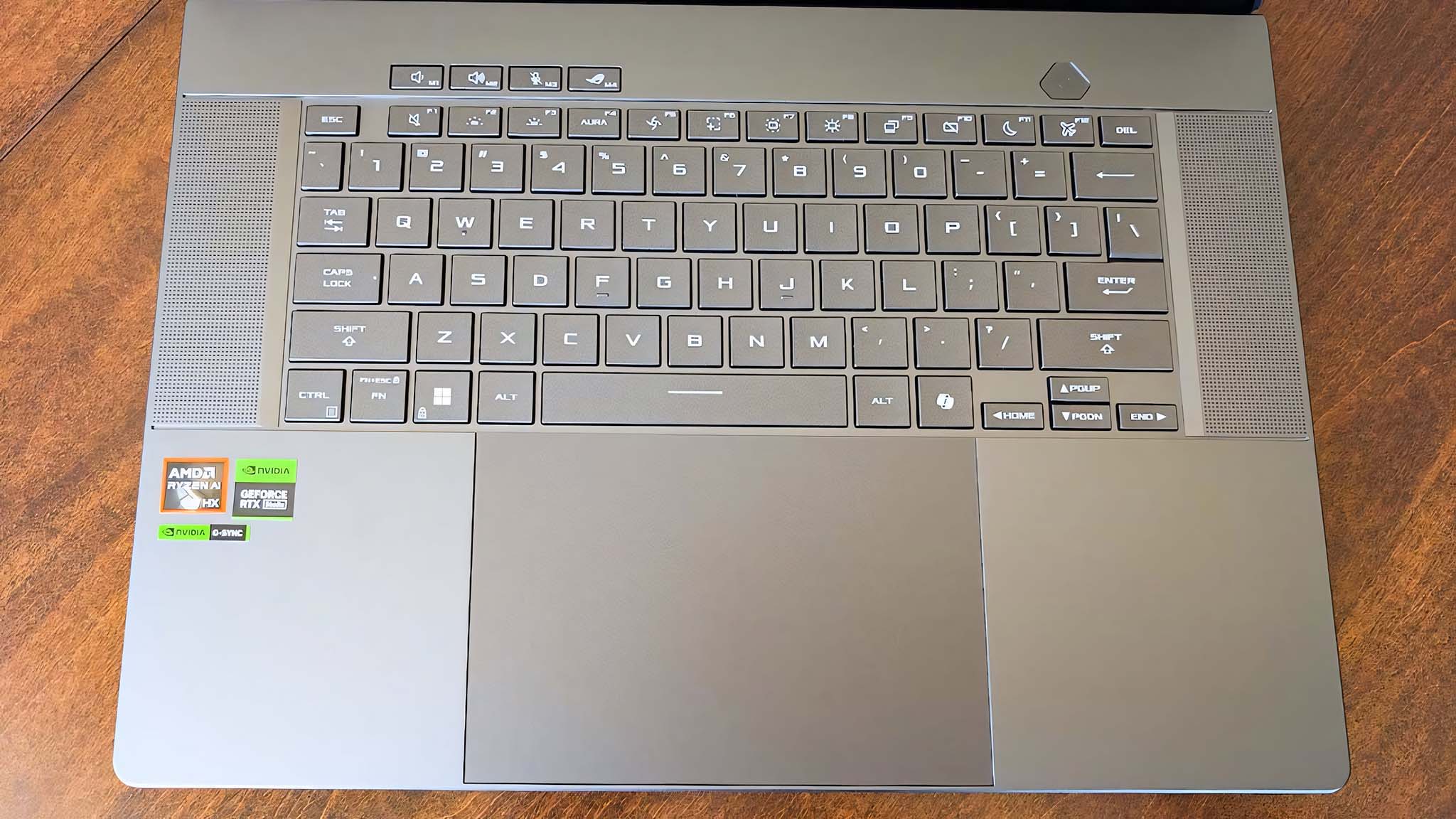
Keyboard and touchpad highlights
- Keys are nicely spaced and feel good to press down on.
- The touchpad is relatively large and easy to navigate, and it doesn't feel like it's taking away from the keyboard space.
- There are plenty of helpful Function key shortcuts, a Copilot button, and four keys above the main keyboard for easy access.
- Keyboard and touchpad rating: 4/5
ASUS does a good job of spacing out the keys on the keyboard so that my fingers have plenty of room to move around. As is typical with ASUS' gaming laptops, the letters displayed on these keys have a futuristic font that some might like and others might not. The RGB colors come through well and provides a fun gaming vibe to the laptop. Overall, the keys press down with little resistance and feel good to use.
This keyboard has a helpful layout that provides more than just the basic controls. Since this is officially a Copilot+ PC, it's no surprise to find a Copilot button near the arrow keys. Pressing this quickly opens Windows' AI assistant. Meanwhile, the function row offers quick access to mute, keyboard backlighting adjustments, keyboard effects, performance modes, the Snipping Tool, display brightness adjustments, the Display Settings menu, a touchpad toggle, a Sleep button, and Airplane mode.
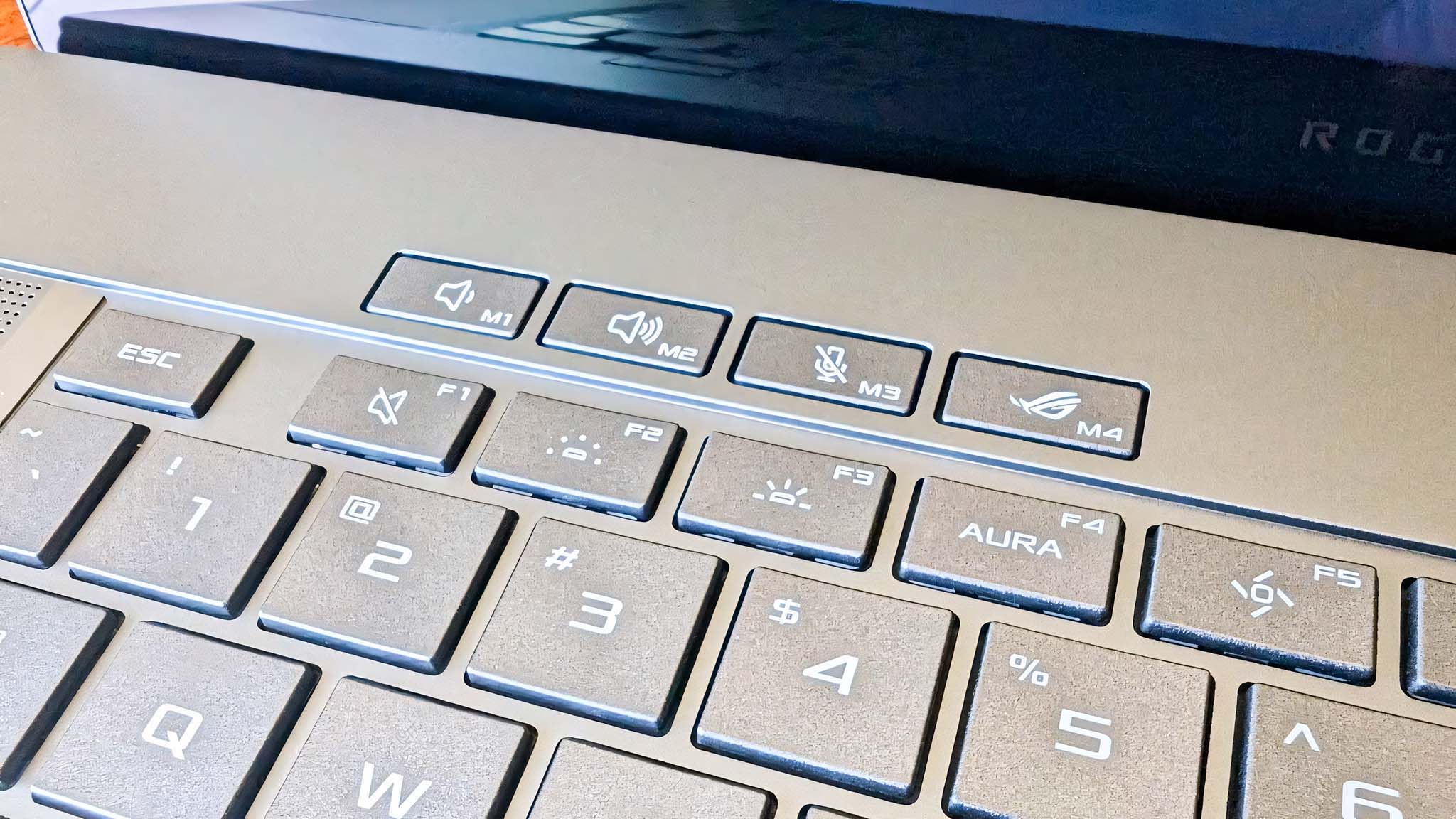
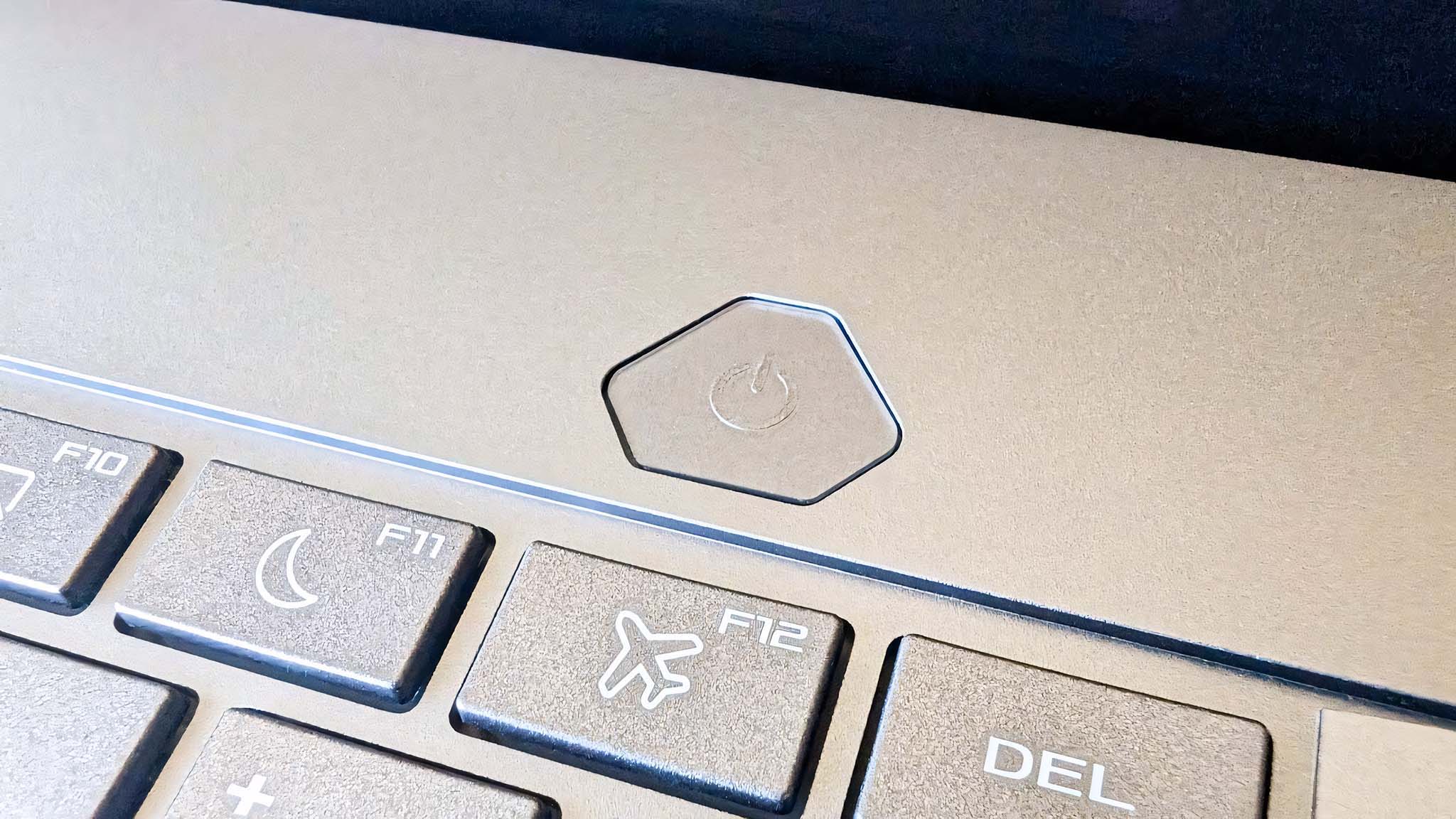
Located above the left side of the keyboard are four buttons: Volume down, volume up, a mic mute toggle, and an Armoury Crate quick launcher. It's nice being able to reach these settings and options so easily. Meanwhile, the large power button is located above the right side of the keyboard, in a good location that prevents it from being pressed accidentally.
In recent laptop testing, I've seen quite a few touchpads that were on the smaller side, which is why I was very happy with the relatively large size of the Zephyrus G16 GA605's touchpad. It's about 6-inches long by 4-inches tall, and it makes it easy to navigate around the various programs and menus that I interact with.
ASUS Zephyrus G16 (2024): Camera, mic, and audio

Camera, mic, and speaker highlights
- Colors and details look good on this 1080p FHD camera.
- Windows Hello is supported for face recognition login.
- There is no physical webcam shutter to ensure privacy.
- The speakers offer great audio quality and can get plenty loud.
- Camera, mic, and speaker rating: 4.5/5
Colors and details look great on the FHD webcam, and it always portrays me well in video call meetings. My voice also carries very clearly thanks to the AI noise-cancelling technology utilized with the built-in 3-microphone array. I set up Windows Hello on this laptop the first time I booted it up, and after that, I never had any issues with the laptop logging me in, just by detecting my face. However, there is no webcam shutter of any kind, not even a button for digitally turning the camera off. I prefer having a physical shutter to ensure my privacy, but this isn't the worst thing, since you can add an adhesive shutter if desired.
This laptop utilizes Smart Amp Technology with Dolby Atmos. The 4-speakers with a dual force woofer face upward and are located on either side of the keyboard. In addition to hearing game sounds, I listened to a lot of music to get a feel for audio quality. The speakers get plenty loud. Mid-to-high sounds come through very clearly, and bass thumps through decently as well.
However, if you want a fuller music experience or need to hear more detailed video game sounds, you'll want to use one of the best PC gaming headsets. Thankfully, the laptop offers Hi-Res certification, so you can use some really nice headsets with this Zephyrus G16.
ASUS Zephyrus G16 (2024): Competition
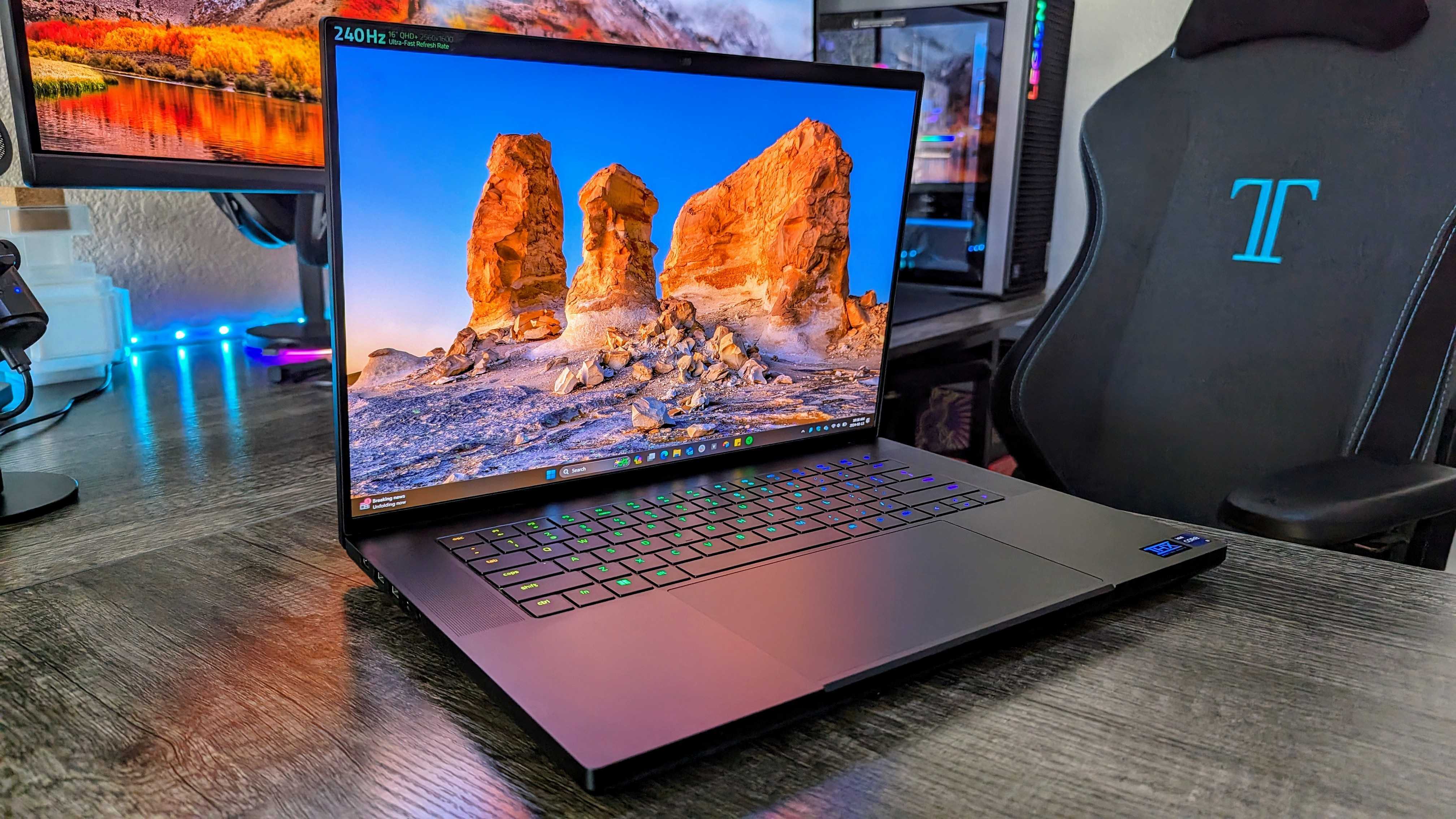
At this point in time, AI processors are still relatively new to the laptop space, and even fewer gaming laptops utilize them. Even then, most of the AI gaming laptops out there use an Intel CPU over an AMD one, so the Zephyrus G16 GA605 with its AI AMD processor is relatively unique. As such, there aren't many competitors to directly compare it against, but there are some similar ones.
First off, there's the Alienware m16 R2 (2024), which has two different Intel AI CPUs and three different RTX 40-Series GPUs to choose from. The one I analyzed for my Alienware m16 R2 review, features an Intel Core Ultra 7-155h, RTX 4070, 16GB RAM, and 1TB SSD. The fans can get decently loud, but the laptop offers great gaming performance and provides plenty of ports. It has a starting price of $1,999.99 at Best Buy.
There's also the larger MSI Stealth 18, which features an Intel Core Ultra 9 185H, RTX 4080, 1TB SSD, and a display that can reach up to 240Hz. Altogether, this makes up a relatively powerful gaming laptop. It has a relatively hefty starting price of $3,299.99 at Best Buy.
If you don't want an AI gaming laptop, then I'll direct your attention to my colleague's Razer Blade 16 (2024) review. In addition to its stunning OLED display, this laptop features a 16-inch OLED display while housing a far more powerful RTX 4090 L and an Intel Core i9-14900HX. With these specs, it's no surprise that it offers better performance than both the AMD and Intel Zephyrus G16 models. It sells for a whopping $4,199.99 at Best Buy.
ASUS Zephyrus G16 (2024): Scorecard
ASUS Zephyrus G16 (2024): Should you buy it?
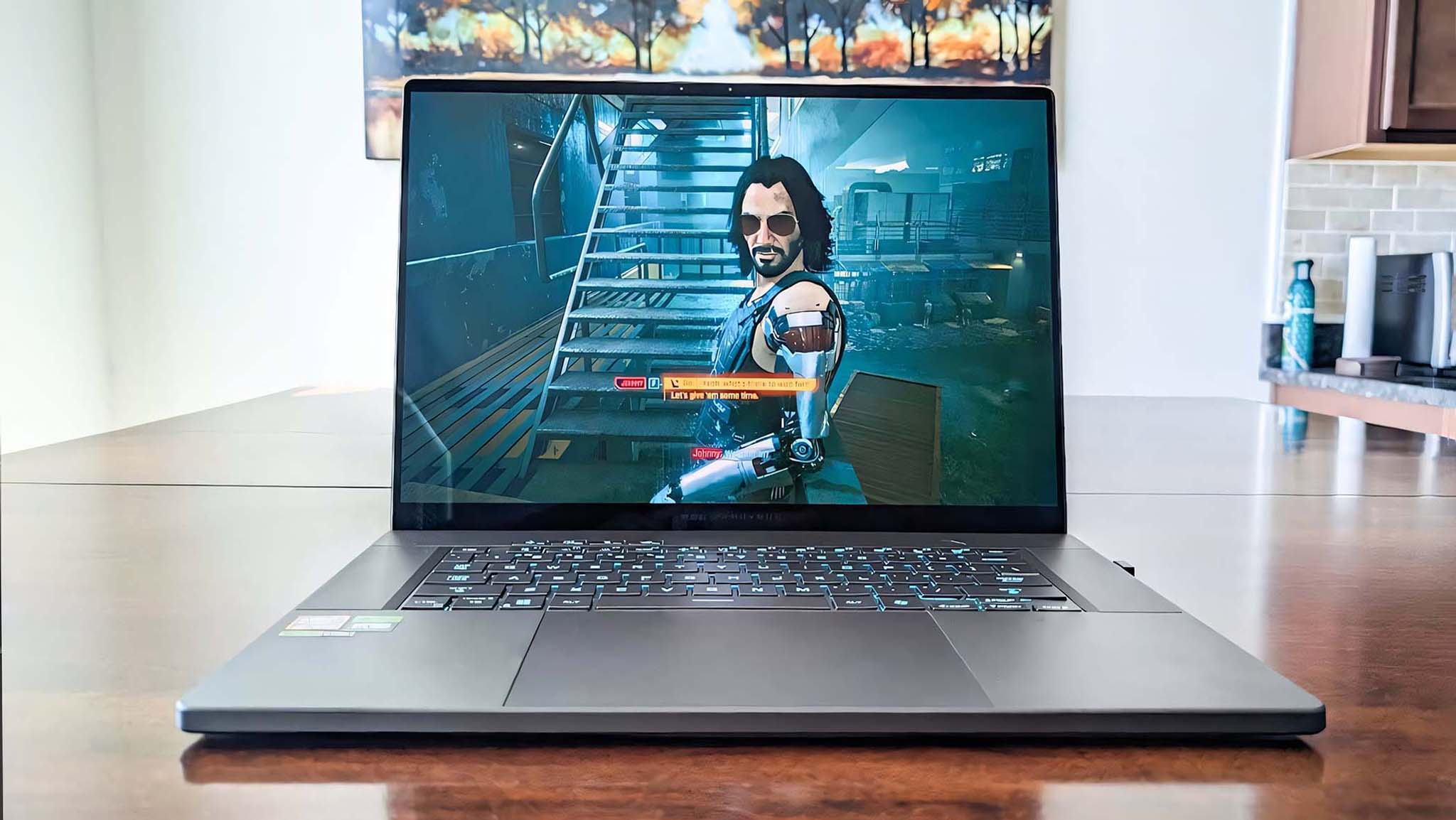
✅ You should buy this if...
- You want a gaming laptop that has a classy design: Most gaming laptops on the market have this edgy look to them or have a lot of flashy RGB that looks out of place in certain scenarios. Meanwhile, the Zephyrus G16, has a far more elegant chassis that looks good in formal and casual settings.
- You'd like an AI PC that can handle gaming: AI CPUs are still relatively new, and they're more likely to be found in business laptops rather than gaming laptops, which is why the Zephyrus stands out.
- You're looking for a laptop with a gorgeous OLED display: Thanks to its 16-inch 2.5K OLED panel, the Zephrus G16 displays game visuals beautifully, with amazing color and crisp detail.
❌ You should not buy this if...
- You want a laptop with long battery life: Most gaming laptops on the market have short battery life, especially ones equipped with the most powerful RTX 40-Series GPUs. Typically, laptops with better battery life aren't as powerful and aren't the best fit for gaming.
- You need a laptop that has an Ethernet port: It's honestly baffling to see a gaming laptop without an RJ45 port. If you tend to play a lot of online multiplayers, it's better to have the option of getting wired internet rather than relying on Wi-Fi. That said, you could fix this by using a USB-C hub that features the missing Ethernet port.
There are plenty of gaming laptops on the market right now, and the latest push has seen them get outfitted as AI PCs and Copilot+ PCs. If you want to keep up with the latest technology, then the ASUS ROG Zephyrus G16 (2024) GA605 is a fantastic choice to go with. The AMD AI CPU is very powerful, outperforming many of the other AI-boosted processors out there. Meanwhile, the inclusion of a RTX 40-Series GPU, G-Sync support, 240Hz refresh rate, and 0.2ms response time allow for some very smooth gaming sessions.
It would be nicer if this AMD model had more GPUs to choose from when configuring the laptop. Additionally, the lack of an RJ45 port is a little odd. However, the Zephyrus G16 provides plenty of other useful features and connections to keep up with your needs. You'll be able to use it in both formal and casual settings due to it having a more classy design than most other gaming laptops out there.







